Holy Roman Empire origin and formation
Charlemagne expanded the Kingdom of the Franks, and incorporated the lands of Saxony, Bavaria, Carinthia and all of Northern Italy towards Rome. In the year of 800, Pope Leo III crowned Charlemagne the Emperor of the Romans; his coronation is marked as the start of the Holy Roman Empire.
After Charlemagne died in 814, his empire passed to his son, Louis the Pious. Seeing that he was the only child, the Kingdom of Francia wasn’t divided, at least in the beginning. Louis, however, had many sons, and eventually, a civil war ensued. It ended in the Treaty of Verdun in 843, and caused the division of the Kingdom of the Franks into Middle, West and East Francia. The Carolingian Empire was briefly united again under Charles the Fat, but collapsed in 888 and was never restored thereafter.
Louis the Child, the King of East Francia, died without sons. Instead of passing to either the Kings of Middle and West Francia, it passed to the Duke of Franconia, Conrad, as he was elected by the Dukes of Saxony, Bavaria and Swabia in 911. He had little success in establishing his authority over the other dukes. Conrad, on his deathbed, thought that only the Duke of Saxony, Henry, was capable of holding East Francia together in face of so many conflicts. He did, and would be the progenitor of the dynasty that lived for a 100 years, the Ottonian dynasty.
The Ottonians
Henry conquered parts of Bohemia, Lotharingia, Schleswig, and, after achieving success in the Battle of Riade, temporarily repelled the Magyar raiders; but it was under his son, Otto who stopped the Magyar Invasions on his lands for good, rendering him the epithet “the Great”. Otto faced rebellions from Swabia and Bavaria, but defeated them and even expanded his territories towards Italy, where the pope later crowned him as the Emperor.
Otto I died and his son and grandson succeeded him. What they attempted to do was to assert dominion over Italy and other states while trying to maintain order within their own lands. The order ended with the deaths of Otto II
and Otto III, both without issue. Then the crown passed to Conrad II, of the Salian dynasty.
The Salians
The first Salian emperor was Conrad II, who descended from Otto I from a maternal line. Conrad warred with Poland for 16 years and 3 wars, period which ended in 1018, when Poland kept Lusatia and the Empire, Bohemia. 15 years later, Poland entered into a civil war, and Lusatia was ceded to Conrad, in the Treaty of Merseburg.
Minor conflicts occurred, but the main one during the Salian dynasty was the Investiture Controversy, which lasted for nearly 50 years. It was a power-struggle of the Emperor and the Pope. The Controversy reached its apex when Rome was sacked and Henry IV was excommunicated, in the 1080s, but it came to cool off in the Concordat of Worms, in 1122. Some princes saw opportunities in the chaos and elected a new emperor, Rudolf, in the period known as the Great Saxon Rebellion. Rudolf died after the Battle of Elster and the Salians regained control of the country gradually.
Supplinburgers, Hohenstaufens and Welfs Henry V, the same emperor who signed the Concordat of Worms and reconciled with the Pope, died without legitimate children, and the throne passed to Lothair, the Duke of Saxony, one of the greatest landowners in Northern Germany.
Lothair, of the brief Supplinburg dynasty, came to blows with Frederick of Swabia, a Hohenstaufen. When Lothair died the throne passed to Frederick’s brother Conrad, of the Hohenstaufen Dynasty. Conrad wasn’t recognized by Henry, Lothair's son in law, Duke of Saxony and of the House of Welf, and his territories were appropriated and given to other landowners, generating the conflict of the Welfs and Hohenstaufens.
When Conrad died, the throne passed to Frederick of Swabia's son, Frederick “Barbarossa”, Italian for “Red Beard”. Barbarossa is considered one of the greatest medieval Holy Roman emperors, living for almost 70 years and ruling for almost 40; He was charismatic and formidable as a general and joined the Third Crusade, where he died of dysentery. Before that, Barbarossa tried to expand his influence in Italy, and, while being a good general, Frederick wasn’t able to succeed, when the Lombard League and the Papal States allied and defeated him in Legnano. After his death, his son Henry was elected; Henry conquered Sicily before dying with an infant son, Frederick.
Henry VI wanted his son Frederick to be the King of Sicily and Holy Roman Emperor, but he was only 3 at the time, and some prince electors instead looked to Otto of the House of Welf, a son of the former Duke of both Bavaria and Saxony, Henry the Lion. Otto grew up and received the support of England, as he was the son of Mathilda of England. Otto was crowned in Cologne as the Emperor. Philip, the Duke of Swabia and uncle of the infant Frederick, opposed him and was elected King of the Romans by the southern electors, but was assassinated in 1208 by Otto VIII of Bavaria. Without much obstacles, save for Frederick, Otto continued as emperor, until he was crushed by the french in the Battle of Bouvines. Frederick, supported by the pope, at least for some time, took power and overthrown Otto, eventually being crowned emperor in 1220.
Frederick tried to once again conquer Northern Italy, but the Lombard League was formed again; Frederick came to conflicts with the papacy when he didn’t join the Sixth Crusade after promising to do so, and was even excommunicated. Despite his conflicts with the pope, he was a friend of Hermann von Salza and was one of the benefactors of the monastic Teutonic Order.
Askanier/House Ascania

History
In the 10th century, the large March of Gero was divided into 5 minor Marches, Ostmark (Eastern March), Nordmark (Northern March), Meissen, Zeitz and Merseburg. Ostmark, the Eastern March of Saxony, is the birthplace of the Ascanians. In Eastern Saxony, the Count of Ballenstedt, Esico, is known to be the first member of the House of Ascania. Without much hard evidence, it’s said that the Margrave of Ostmark, Odo, arranged a marriage between his daughter and a man named Adalbert, coming from the castle of Ballenstedt. When they died, their son, Esico, large amounts of land in Eastern Saxony; When Esico married the sister-in-law of the emperor, Matilda, and increased his number of estates and properties.
Esico’s son, Adalbert, participated in both Saxon Rebellions, supporting “Emperor” Rudolf of Saxony. The Duke of Saxony, Magnus of the House of Billung, died without male heirs. After his death, his duchy passed to Lothair, of the Supplinburg dynasty, and his estates were divided between his daughters, Eilika and Wulfhilde. Eilika was wed to the Count of Ballenstedt, Otto, while Wulfhilde married Henry, the Duke of Bavaria, of the House of Welf. It did not take long for the House of Ascania and the House of Welf to dispute over the control of Saxony.
Albert the Bear, the only son of Eilika and Otto, joined the Wendish Crusade and founded the Margraviate of Brandenburg, and also expanded his territory towards Nordmark. Henry the Proud, the Welf son-in-law of Lothair of Saxony,
lost his duchy to Albert, who, in 1142, renounced his position in favor of Henry’s son, also named Henry, the Lion. Henry the Lion was the Duke of Bavaria and Saxony, and many German princes held hostilities against him, for holding such a large state. He was declared a traitor in 1180, and Bavaria was passed to the House of Wittelsbach, while a severely reduced Saxony was returned to the House of Ascania.
Bernhard, son of Albert the Bear and Duke after Henry the Lion, struggled with some of his vassals for control of Saxony, because they still looked up to the former Welf duke, but they were all pacified, and his son, Albert, the current Duke of Saxony, along with his brother and his cousins, control a great deal of land in the Northern and Central areas of the Empire.
Having large territories, they also share borders with powerful factions. The Hanseatic League may want to expand their trade empire, and further north, the Danes may try to recover their lost influence in Northern Germany and in current Pomerania, now an Ascanian fief; before being a fief of the House of Ascania, the Duchy of Pomerania was under vassalage of Denmark for decades, and so, it would be prudent for the Margraves of Brandenburg, Otto and John, to extend their influence in the region, commercially and, militarily.
Meanwhile, Henry the Bearded of Silesia pursues the unification of his country, and the Ascanians might be wise in making good alliances and stepping in at the right moment to frustrate Henry’s ambitions. Greater Poland is an obvious target for the Duke, and they might not like their ambitions. And, at last, Otto the Child, of the House of Welf, while no longer being a duke, is off bounds for an invasion, because the reconciliation of the Houses of Welf and Hohenstaufen.
The possessions of Anhalt, Saxony and Brandenburg make the House of Ascania one of the most, if not, the most, powerful House in the Empire and Frederick II is concentrated in Italy, giving them large autonomy. The Ascanian dukes
and counts have a chance to build their own possessions due to that, and if/when the time comes, become emperors of their own.
Starting provinces
Welfen/House of Welf
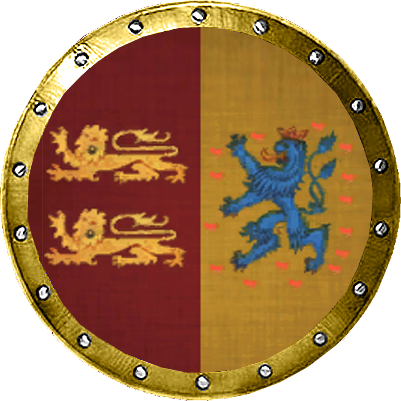
History
The House of Welf as it is today originates from a marriage of two noble families, the House of Este and the [Elder] House of Welf. It was powerful in the past, and now is but a shadow of its former self.
Kunigunde of Altdorf, the sister of Welf III, belonged to the line of the Elder House of Welf. She married the Margrave of Milan, Albert Azzo, and had a son, Welf. Welf III died childless, and so his properties passed to his nephew, Welf, the founder of the current House. Welf married the daughter of the Duke of Bavaria, Otto of Nordheim.
Otto was one of the leaders of the Saxon Rebellion, but Welf did not support his father in law. Later, when the rebellion was quelled, he divorced from Otto’s daughter, and in reward for his loyalty, Emperor Henry VIII made him the new Duke of Bavaria.
During the Investiture Controversy, Welf supported Pope Gregory, and even joined Rudolf during the Great Saxon Rebellion, making him lose his lands, but regaining those 19 years later. Welf I died while returning from a crusade, and was succeeded by his son, Welf II, who ruled for 19 years until 1120. Since he died childless, his brother, Henry IX, “the Black”, succeeded him.
Henry’s oldest daughter married Frederick II of Swabia. When the last Salian emperor died, Henry IX was to support his son in law Frederick to the throne of Emperor, but changed his mind when Lothair promised that his only daughter and heiress, Gertrude, would marry Henry’s son, Henry the Proud. Lothair became the emperor, and, while facing opposition by the Hohenstaufen family members, the Welfs supported him.
Henry X became the Duke of Bavaria and Saxony in 1126. Saxony faced internal conflict between the Houses of Ascania and Welf. Conrad III deprived Henry the Proud of both his duchies; Bavaria was passed to the Duke of Austria and Saxony to the Count of Anhalt and head of the House of Ascania, Albert the Bear. Henry XII “the Lion” (or Henry III) was reinstated as the Duke of Saxony and Bavaria in 1142 and 1156, respectively.
In 1180, he was declared a traitor and lost both his duchies, Saxony given to the House of Ascanian and Bavaria to the House of Wittelsbach. Otto, his son, became the emperor, supported by his brothers and the northern German princes. Otto was deposed by Frederick II, who ensured the sovereignty of the House of Hohenstaufen, and his house was briefly banned.
As reconciliation, the two other sons of Henry the Lion, William, who held lands around Luneburg, his permanent residence, and Henry, who held lands around Stade and Altencelle. William’s son Otto became the united leader of the formerly divided Welf faction when he inherited the lands of William (his son died childless and he only had daughters other than him).
Otto married the daughter of the Margrave of Brandenburg and repelled imperial attempts by Frederick II to crush this new founded Welf unity. With the support of the Pope, Brandenburg and the King of Denmark, as well as loyal subjects, peace is sure to be underway and the Welfs most likely will regain their position as dukes. As emperors, however, it can only be achieved by force, and it is something they lack, in the moment.
Starting provinces
Wittelsbacher/House of Wittelsbach
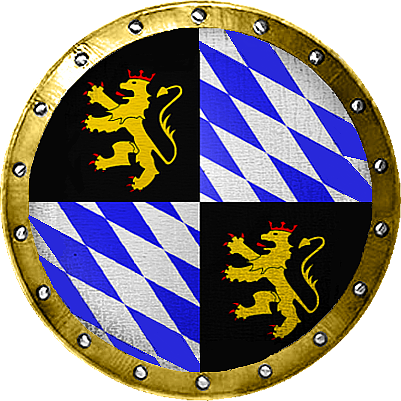
History
The castle of Wittelsbach was acquired by Otto II, the Count of Scheyern, one of the ascendants of the House of Wittelsbach. His nephew, Otto IV, supported Henry V during the Saxon Rebellion, and was elevated to Count Palatine of Bavaria. His son became a staunch and loyal servant of the Emperor, Frederick Barbarossa, and in reward was made Duke of Bavaria in 1180, after Henry the Lion was indicted of treason.
Their ascension to power was moderately peaceful, despite Otto facing wary vassals after becoming Duke. However, his son Ludwig (Louis) faced several conflicts, and during the height of the Welf-Hohenstaufen conflict, Ludwig supported the Hohenstaufens, and after the victorious party emerged (the House ofHohenstaufen) the House of Wittelsbach gained possession of the Palatinate of the Rhine. Ludwig would be murdered in 1231, and his son would become the Count Palatine of the Rhine, as well as the Duke of Bavaria.
Otto II, the Illustrious, is the current duke. He is a friend and ally of the emperor, but not of his son. Henry, the emperor’s son, disobeys and is in conflict with his father, and one of his supporters is the Duke of Austria, Frederick the Quarrelsome. Frederick is hostile to Bohemians, Hungarians and Bavarians alike; the emperor might not oppose Otto if he conquers Wels and Vienna.
In a way or another, all the other houses are more powerful than the House of Wittelsbach. The Hohenstaufens are more powerful through influence, the Ascanians through territory and the Welfs through charisma. They have to revert
these advantages in order to further their position and power.
Starting provnces
Staufer/House of Staufen
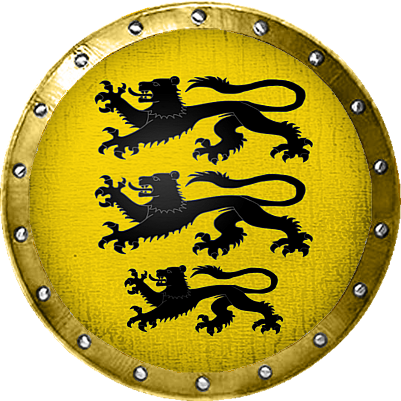
History
The House of Staufen, before being emperors, were Counts Palatine of Swabia, in southern Germany. The Castle that gave name to the family, Staufen Castle, has its name come from Stauf, which means "chalice", and refers to the conical shape of the hill which the castle was built in. The castle was built by Frederick I (born 1050), the ancestor of the family.
During the Investiture Controversy and the election of the anti-king Rudolph of Rheinfelden, the Duke of Swabia, Frederick remained loyal to Henry IV of the Salian dynasty, and in reward was invested with the position of Duke of Swabia and the hand of the Emperor's daughter. It was Frederick's son, Conrad, who would become the regent of Germany to Lothair, the Duke of Saxony who became the emperor.
After Lothair's death, Conrad became the Emperor and deprived Henry X of his estates, granting them to Albert the Bear of Anhalt and Leopold of Austria. In 1142, however, most of Saxony was returned to Henry the Lion, Henry X's son. And, in 1156, under the reign of Emperor Frederick Barbarossa, Bavaria was given to him.
Frederick was involved in several wars with the Guelph Lombard League. These ended in Legnano, where a unit protected a Caroccio Standard until reinforcements arrived and caught the imperial forces on the rear, effectively ending Imperial rule in Lombardy. A peace treaty which recognized the Pope's authority over the Papal States was held in Venice in 1177, but the Lombard cities would fight until 1183. A setback that restarted the Welf-Staufen hostilities occurred in Italy: Henry, one of the most powerful men in the Empire, refused to aid Frederick's war effort in Lombardy. Taking advantage of the hostilities the other German princes held against Henry, Frederick and a court of bishops and princes stripped him of his lands in 1180. Frederick would die in the Third Crusade and be succeeded by his son, Henry. Henry conquered Naples, Palermo and was crowned King of Sicily in 25 of November 1194; In 1197, he died of either poisoning or malaria in Messina, Sicily.
His son, Frederick II, became the King of Sicily immediately, in 1198, but would only become the emperor in 1220, because Otto IV was crowned Emperor by the Archbishop of Cologne. Frederick's uncle Philip was an obstacle until he was murdered in 1208 by the Duke of Bavaria. Otto IV would be defeated at Bouvines in 1214, and have his grip over the empire decreasing. He would finally die in 1218, and Frederick be crowned Emperor in 1220. Frederick was a patron of science and arts, mainly literature, and banned trials by ordeal. He joined the Fifth Crusade, but due to disease problems in his army, didn't join the Sixth up until 1228, which made the Pope excommunicate him. John of Brienne, the former King of Jerusalem, led troops in attack of Sicily while Frederick was at the Holy Land. Only in 1230 would the Empire reconcile with the Pope.
Frederick had a discord with his son Henry, his co-ruler; these lasted until 1235, when he was imprisoned.
It is now 1232, and Ezzelino da Romano betrayed the Lombard League and struck an alliance with Frederick, meaning that Verona and the vital Brenner Pass are at the hands of the Emperor. Verona, however, is surrounded by enemies. The Guelph cities of Padua, Mantua, and the Houses of Este and San Bonifacio. It is within the emperor's best interests in holding Verona until a sizeable army can be mustered and marched to take the stubborn Italian cities. Eastwards, Duke Frederick of Austria, rightly called "the Quarrelsome", supported Frederick's rebellious son Henry and picked conflicts with powerful factions, such as the Kingdom of Hungary and the House of Wittelsbach. In Brunswick, the House of Welf regained much of their power, and a war with them would be costly for the Staufens, mainly due to the fact that they are allied with Ascania, probably the most powerful house in the empire. The Staufens passed from counts to dukes, and from dukes to emperors. But it is a costly and demanding seat. It remains to be seen if they will continue as such.
Startng provinces
HRE economy
The economy of the Empire was largely based on three different branches: Mining, agriculture and trade. Because of it’s large population count (about 7 to 10 million people during the mods timeframe)
it was very important for the Reich to sustain a giant farming sector to be able to feed the ever-growing population. Like in other feudal societies about 90% of the population lived as farmers - either on their own, borrowed land or in service of their local noble. Mining was very important - especially on the western and southern part of modern Germany and in the alpine regions of Reichsitalien (Northern Italy). Although gold, silver, iron and copper allowed for great profit stone was especially valuable to the Empire to construct roads, castles, churches and other building projects. With the Hanse the Empire was in possession of the greatest trading organization of the western world, especially in the Baltic and Scandinavian regions. Through their monopoly on a variety of goods the Hanse ensured the Reich with a ever-flowing stream of coins and greatly aided in the maintenance of its legiones.
HRE goverment and society
The central office of the “romanorum imperium” (Empire of the Romans, later “sacrum imperium romanum” (Holy Roman Empire)) was the “König” (King). Coming from old east-frankish tradition this title was not hereditary like in other european societies but bestowed upon one of the greater nobles of the Reich by election. Normally a duke of one of the four Germanic stem-duchies (Swabia, Bavaria, Franconia and Saxony) was chosen. The election normally took place in Frankfurt and was conducted by all free nobles of the Empire who wished or were able to attend the event. The elected duke then traveled to Aachen where he was crowned by the archbishop of Cologne as “rex romanorum” (King of the Romans) and “rex burgundionum” (King of Burgundy). He then had to travel to Pavia where he was crowned “rex langobardorum” (King of Italy) and finally to Rome. There the current pope crowned him “romanorum imperator augustus” (Emperor of the Romans) which finalised his transition from “König” (King) to “Kaiser” (Emperor). Because of this complex and lengthy process and because of different feuds between pope and emperor not all Roman kings got crowned as Roman emperor which however did not decrease their power in any significant way. The Emperor was seen as “first under even” by the other stem-dukes which set the way for major disagreements but also great unity. Heavily associated with the rex/imperator are the so called “ministeriales” (ministerialis) or “unfree nobles”. They stood under direct command of the emperor and made up a large proportion of the armed forces as knights or were assigned to administrative tasks in service of the Reich. The society of the Empire was mostly feudal but in the later years of the 13th century the so called “Reichsstädte” (Imperial cities)
emerged. They were free cities which paid their taxes directly to the emperor and were governed by themselves thus allowing the rise of a strong merchant & citizen class which greatly contributed to trade by for example founding organizations like the Hanse. The “romanorum imperium” was no national state and thus was composed of a large set of different cultures (Germanic, Slavic, Italian etc.) and a plethora of languages and dialects which contributed to a high acceptance of foreigners and different cultures in comparison to other medieval societies but also meant that the new Empire never achieved great unity - exactly like his so prominent predecessor.
HRE Army
Feudalism wasn’t as strong in Germany as it was in England or France. However, the western regions of the Empire, such as Lorraine, Burgundy, Rhineland and Franconia, had developed it, due to their approximation to France and their cultural ties with the old Kingdom of West Francia. Knighthood came, however, and the earliest record of granting fiefs and knighthood dates to 1146.
The Holy Roman Empire was a loose confederation of states, and the emperor depended on the goodwill of the rulers of those states for military support. On the other hand, while the high dukes, kings and princes did not always comply with the emperor’s will, the church princes (abbots, bishops and archbishops) owed their positions and titles to the Emperor, and usually abided to his commands, and therefore, the emperor mostly relied on church princes for troops.
But not for long, for the Emperor, Frederick Barbarossa, made reforms to his military system, making it more homogeneous and feudal, looking more like France. During his reign, the vassals of the princes/dukes were obligated to serve at least 6 weeks per year, whereas in the past, their contribution basically was with money. It didn’t last very long, however, when Frederick II signed the Statute in Favor of the Princes, in 1231, which decentralized the power and exempted the princes and dukes from imperial interference.
Though not frequently employed in large numbers, mercenaries were a common sight in Imperial armies, making up the retinue of the emperor and the princes. Mercenaries from Brabant (Brabançons) and Flemish mercenary infantry served with Frederick Barbarossa in Italy, and Hungarian horse archers were employed as well.
A considerable portion of the Imperial army was supplied by Ministeriales (German: Diensteutlen), class of unfree knights, who administered fiefs and became popular with imperial princes. Eventually, they began to hold lands of their
own, so their offices were converted to feudal titles. An example of a powerful Ministerialis was Werner von Bolanden, reported to hold as many as 17 castles and command as many as 1,100 men-at-arms. They were indistinguishable from the nobility, and fought either mounted or on foot, with good weapons and armor.
From the late 12th century the lower classes were steadily excluded from military service, except for Thuringia, Bavaria and Saxony. Town militias provided infantry when necessary, but they were not expected to do anything effectively other than guard their walls and kill militias of rival princes in civil wars.
Examples of units:
Bürgerwehr/Urban polearm militia
Reisige Schützen/Sergeant crossbowmen
Dismounted Ministeriales - German unfree nobles
In colours of House of Staufen:
And House of Welf:
Familiares/General's Bodyguard
In colours of House of Wittelsbach:
And House of Ascania:
Research:
KEA, claudioxd27, Aphain
Materials from:
Happytime mod (website not accessible)
Modelling and texturing: Hellvard
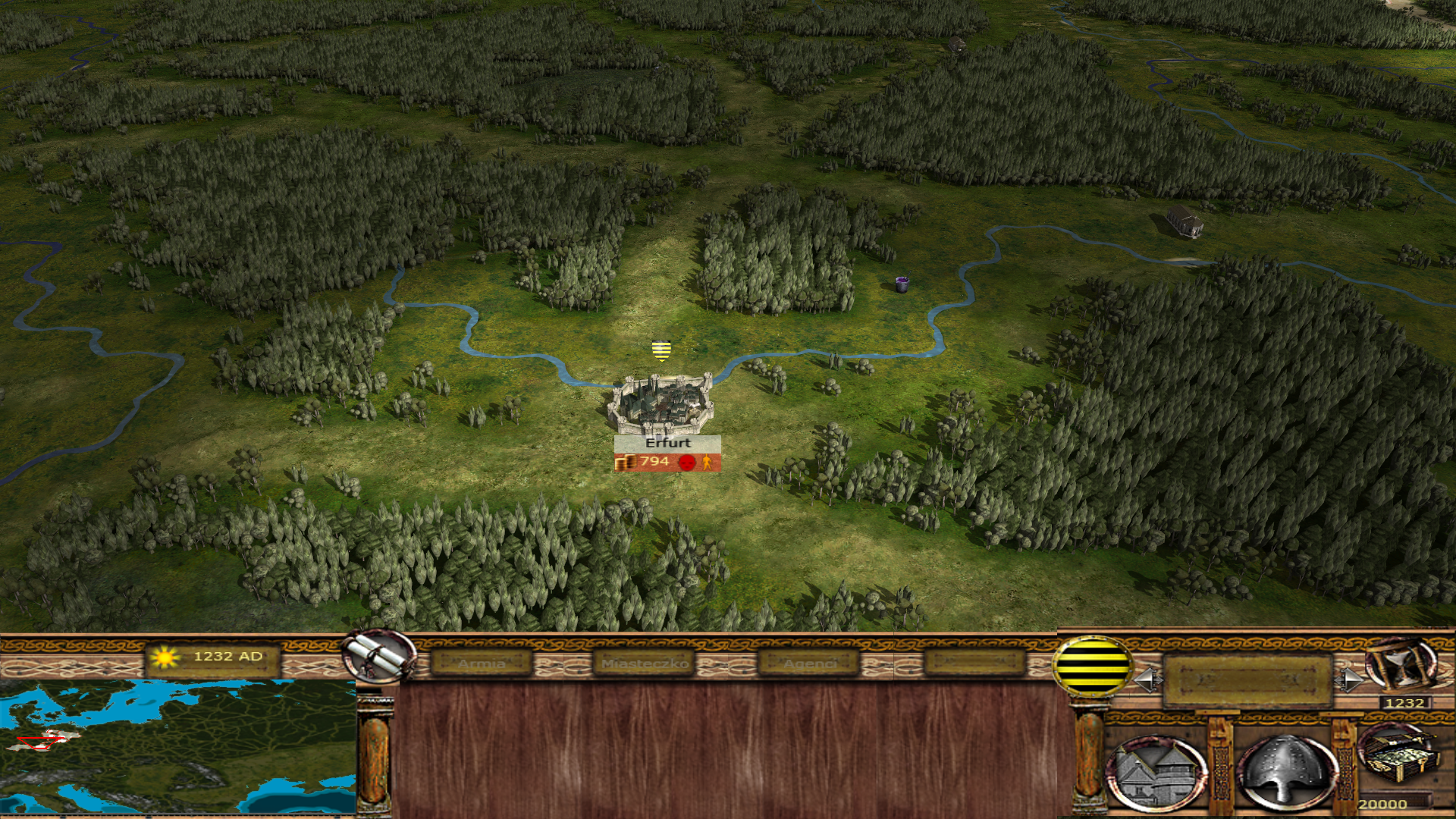
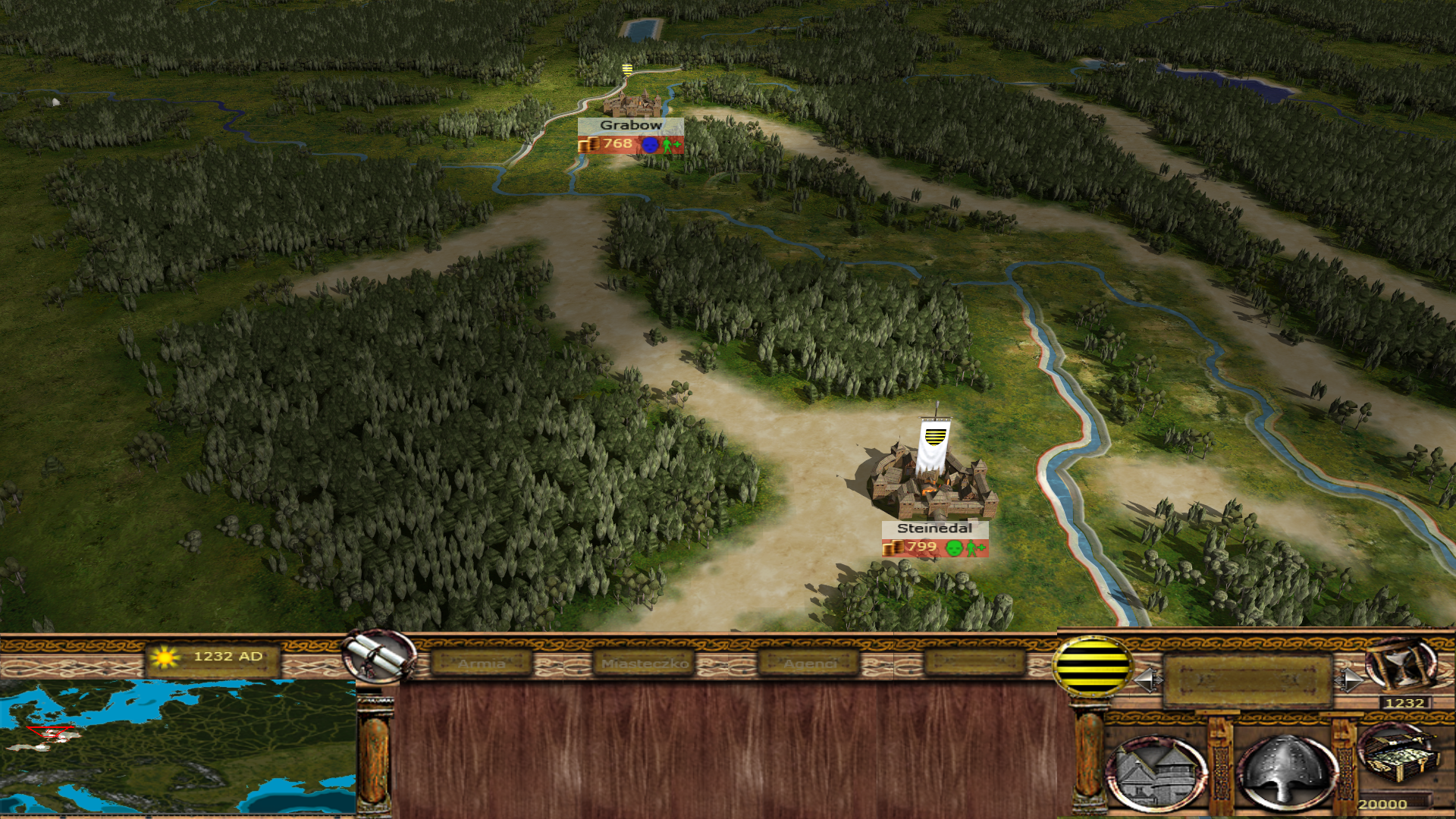

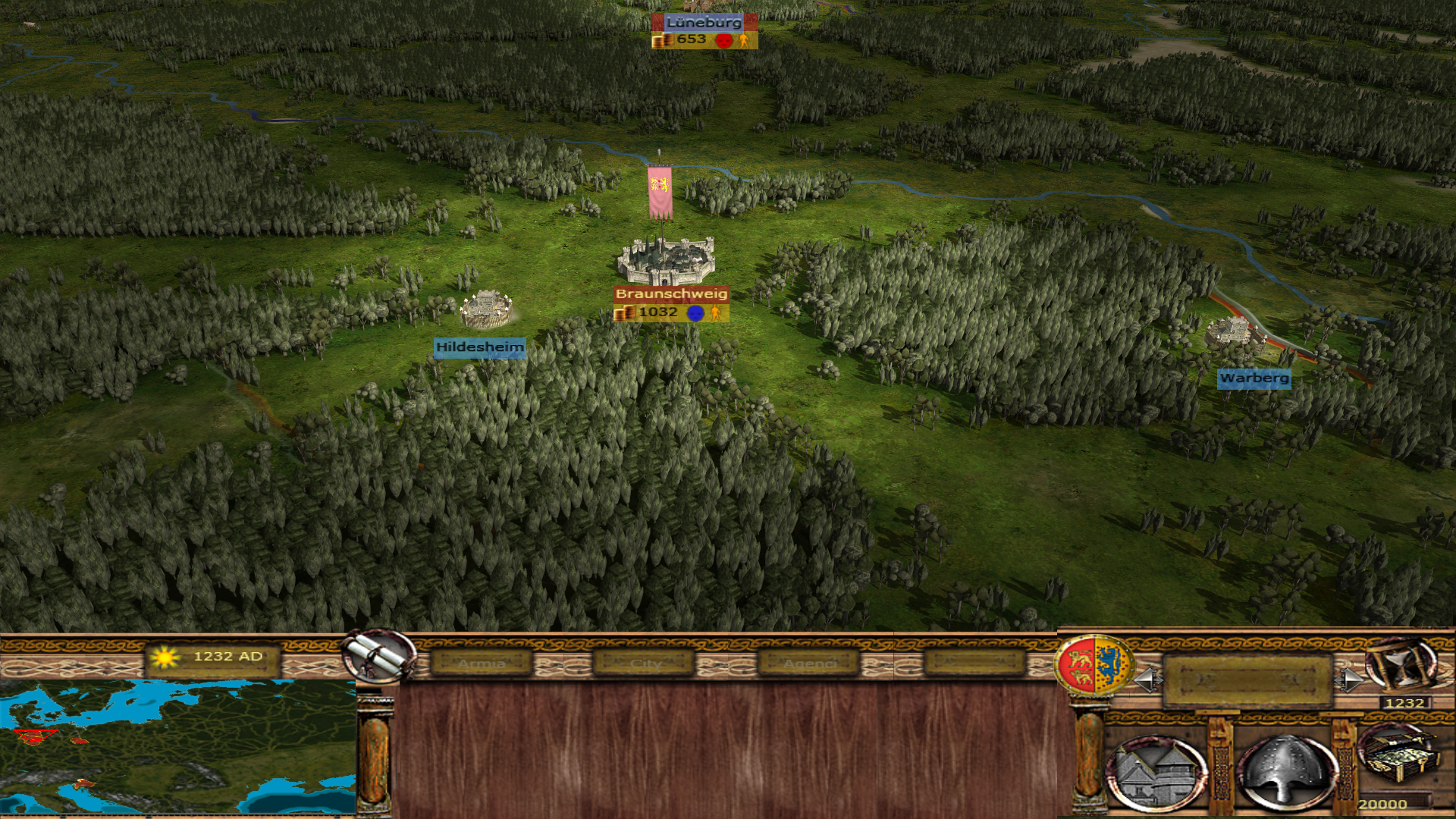

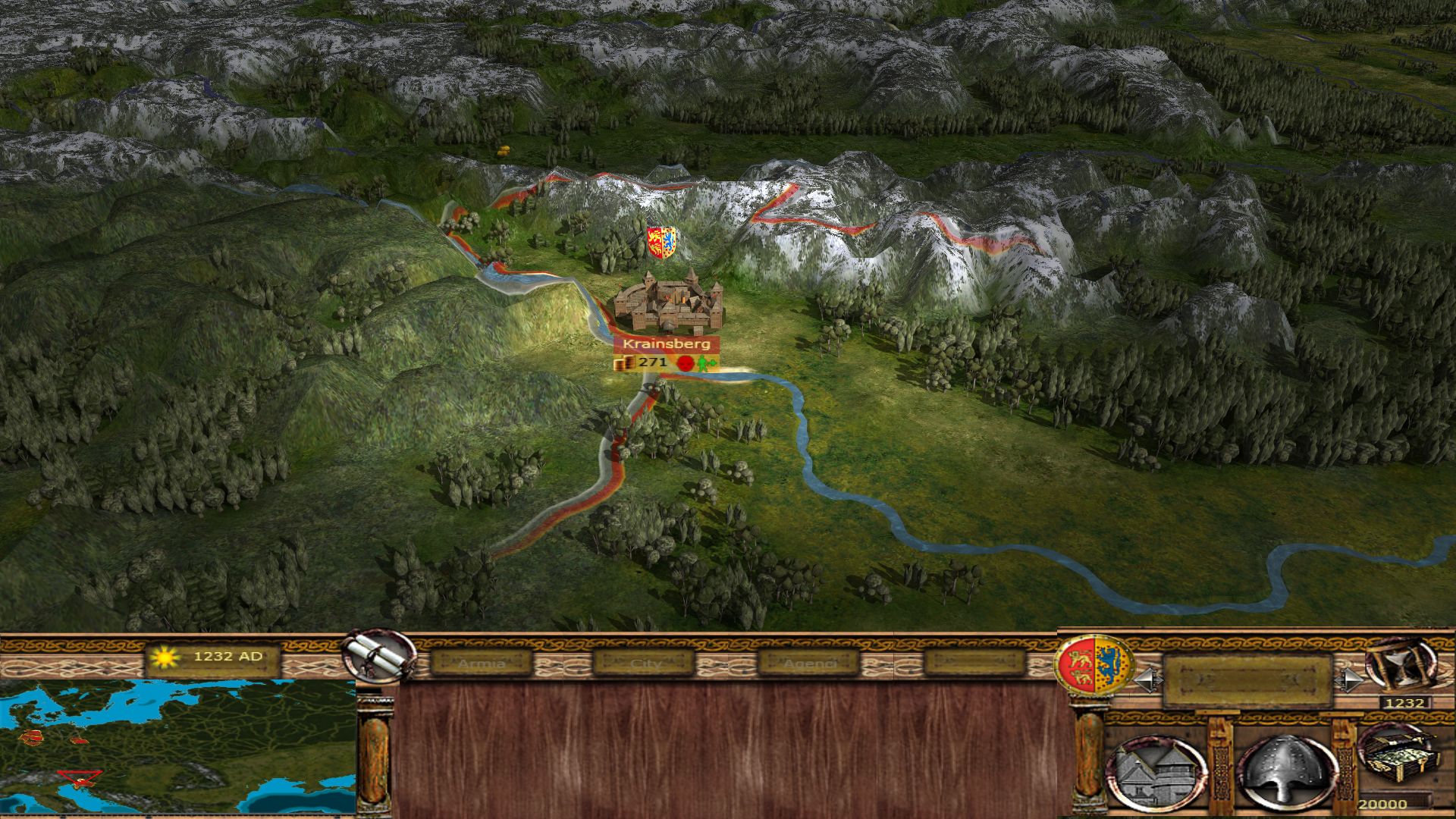

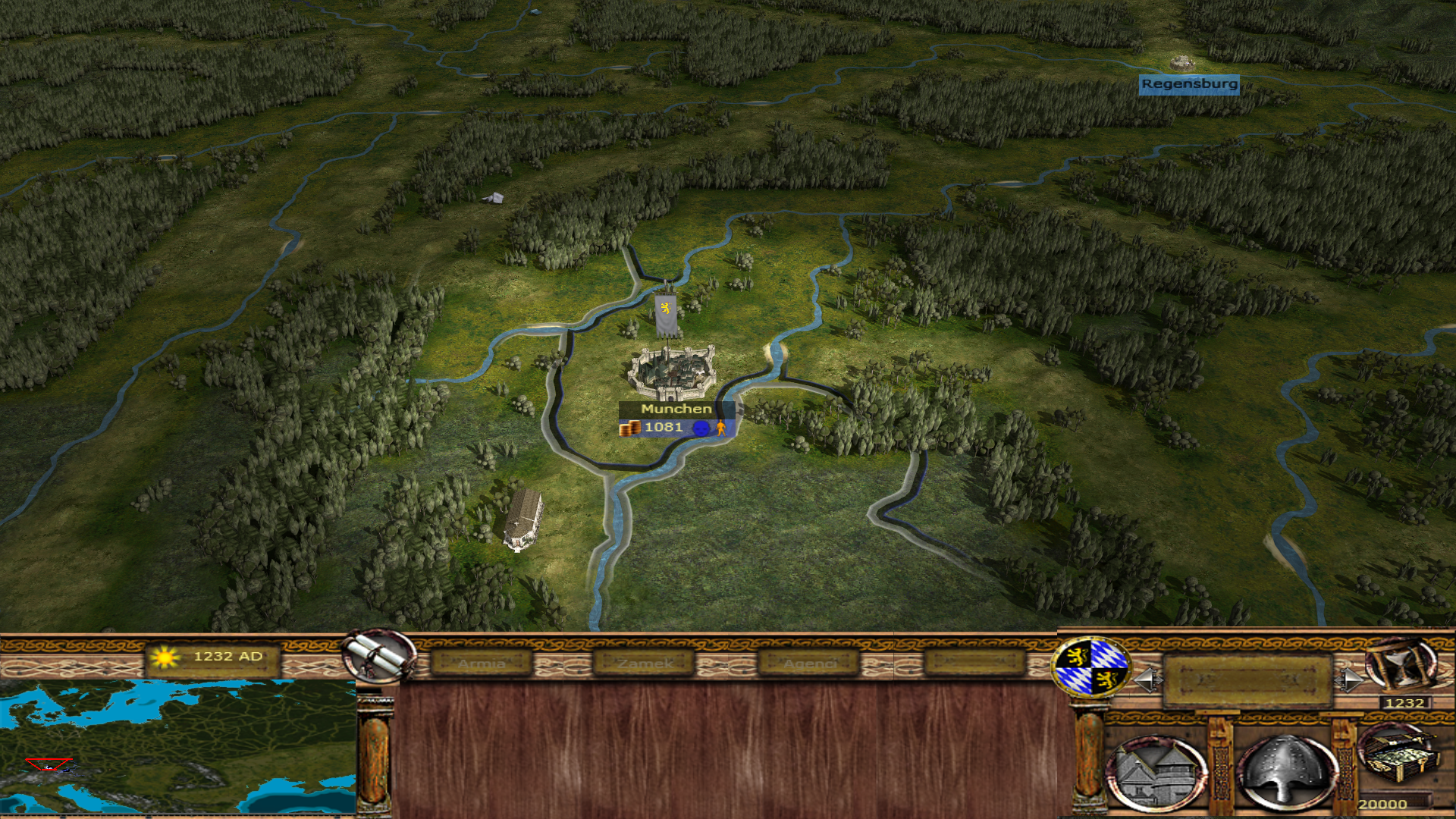
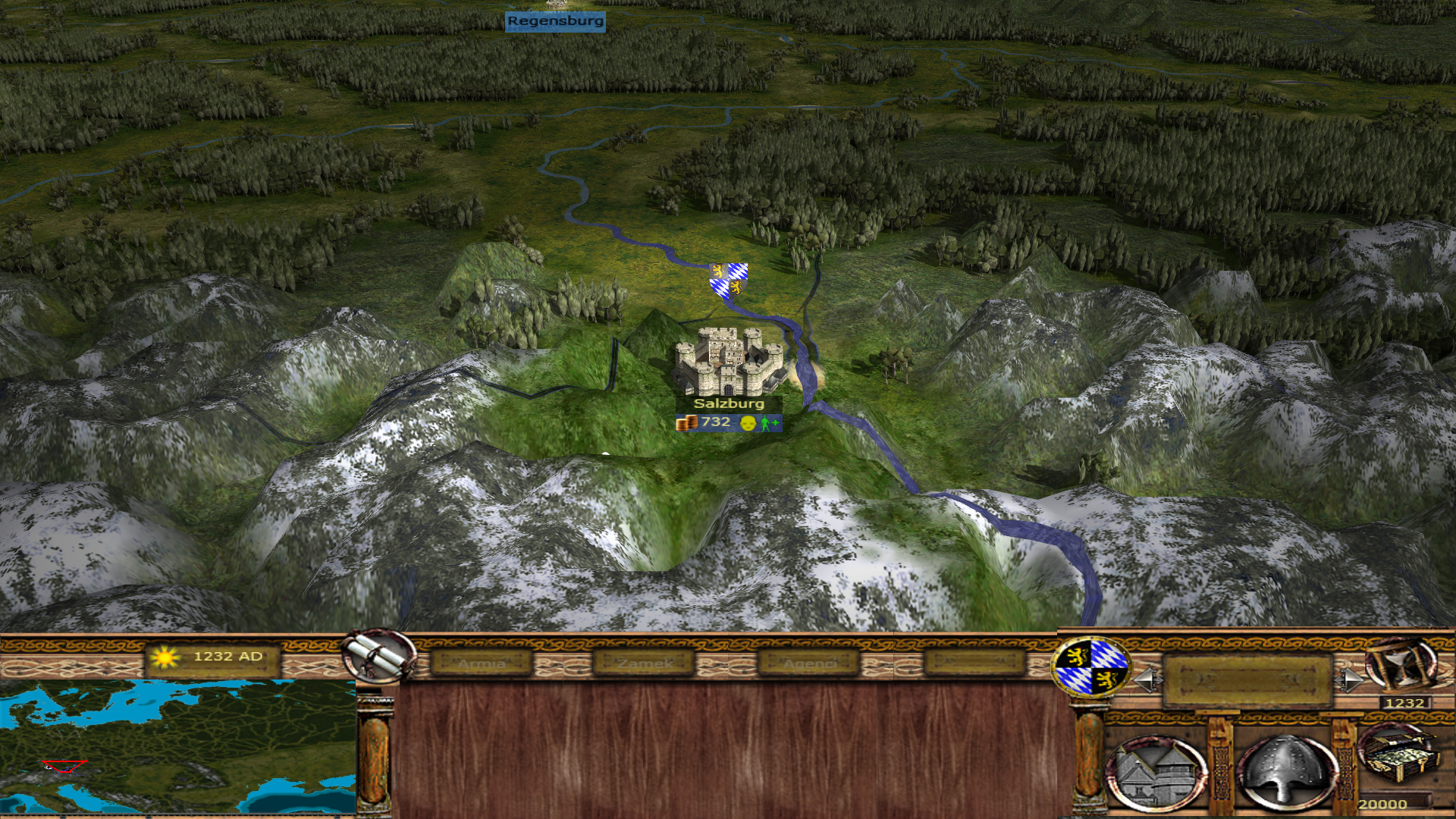
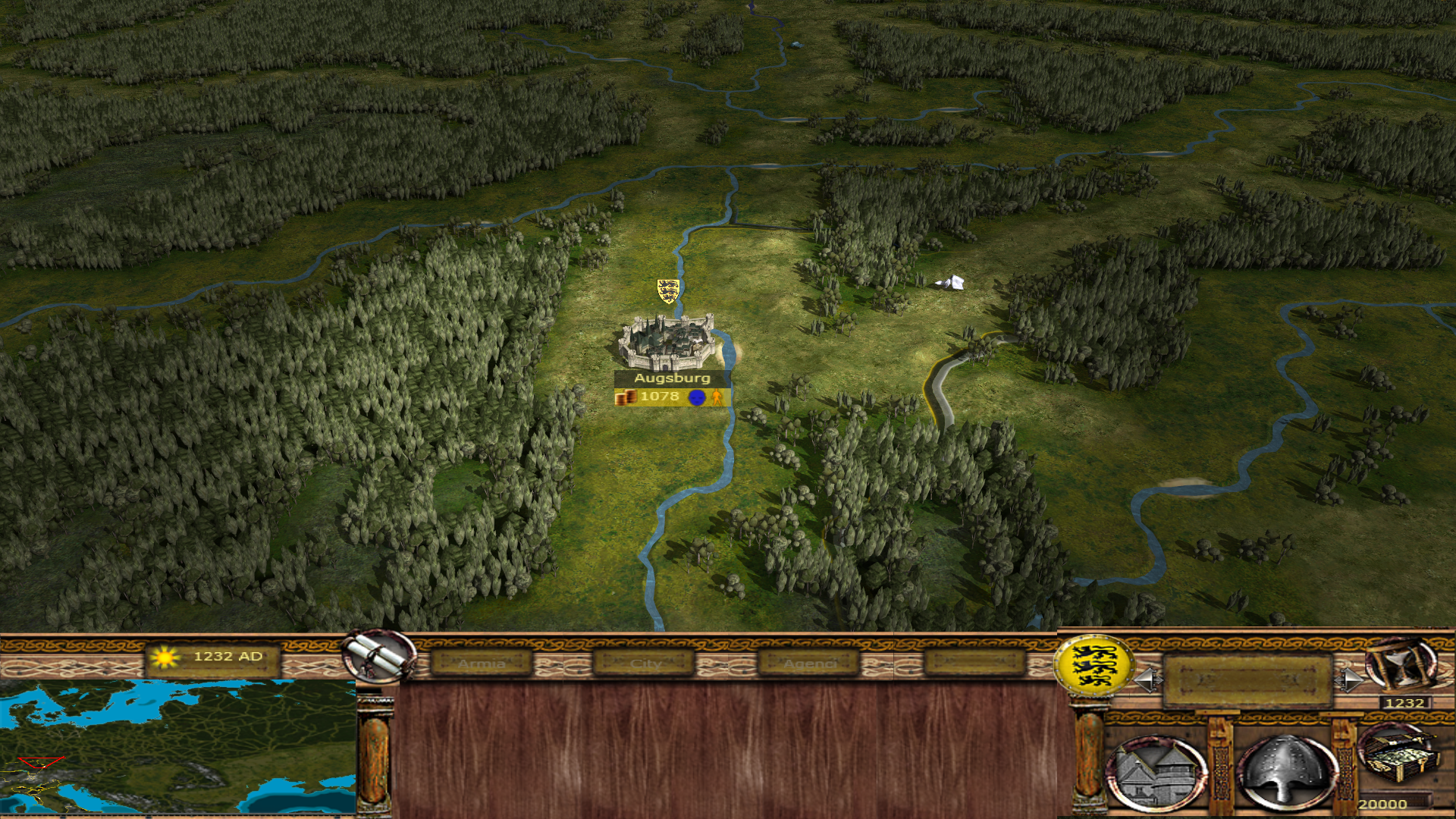
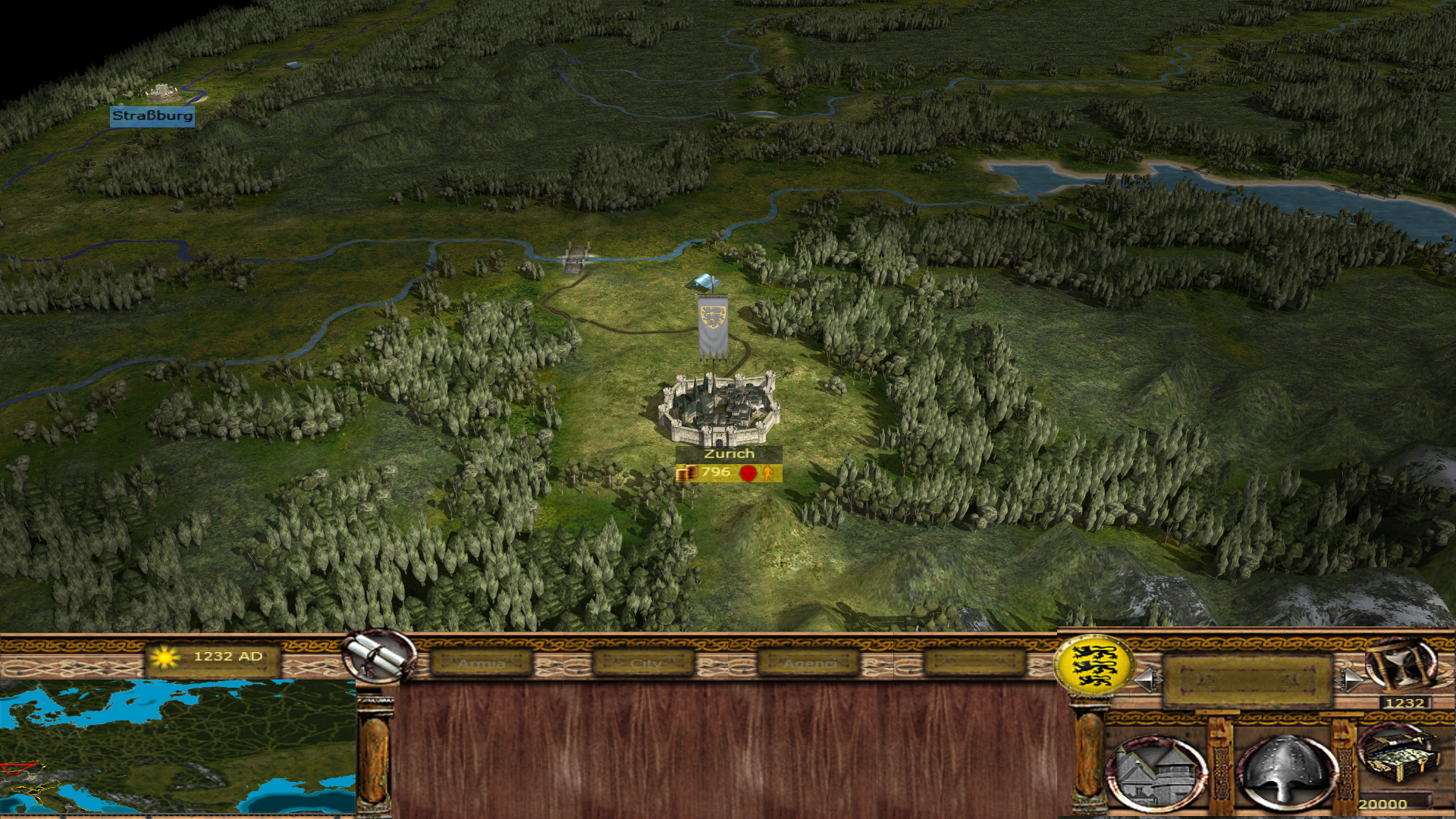
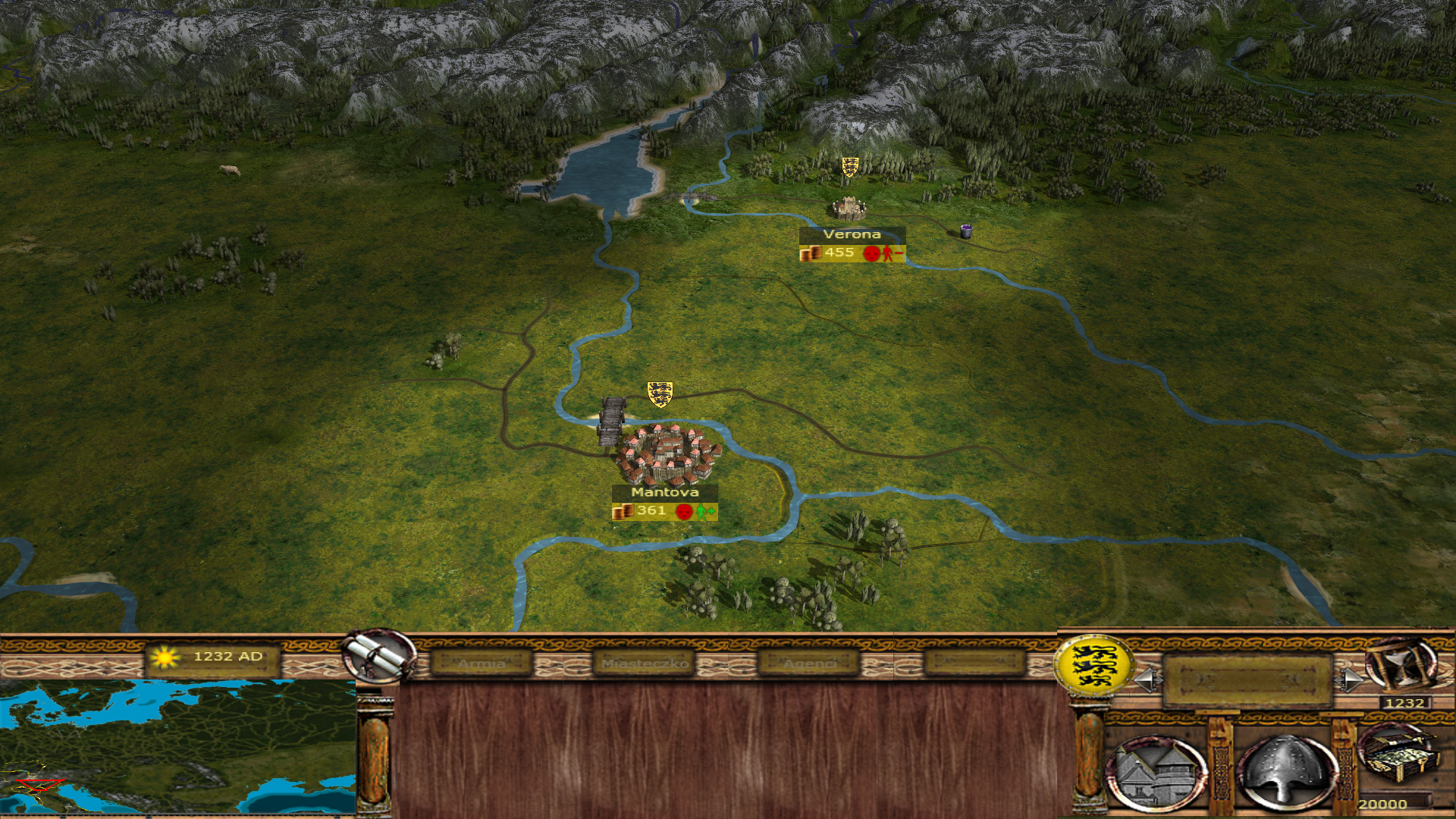
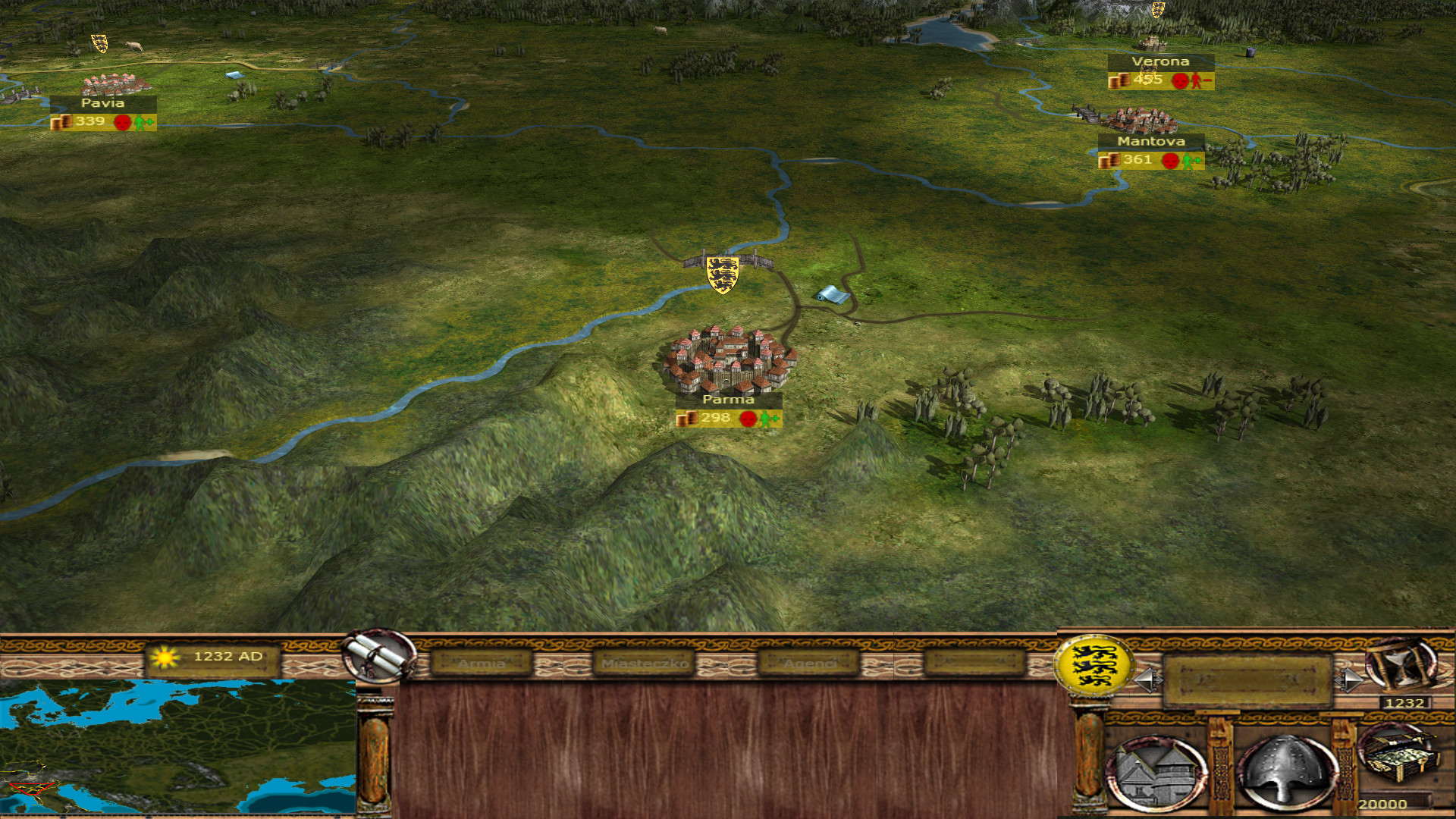

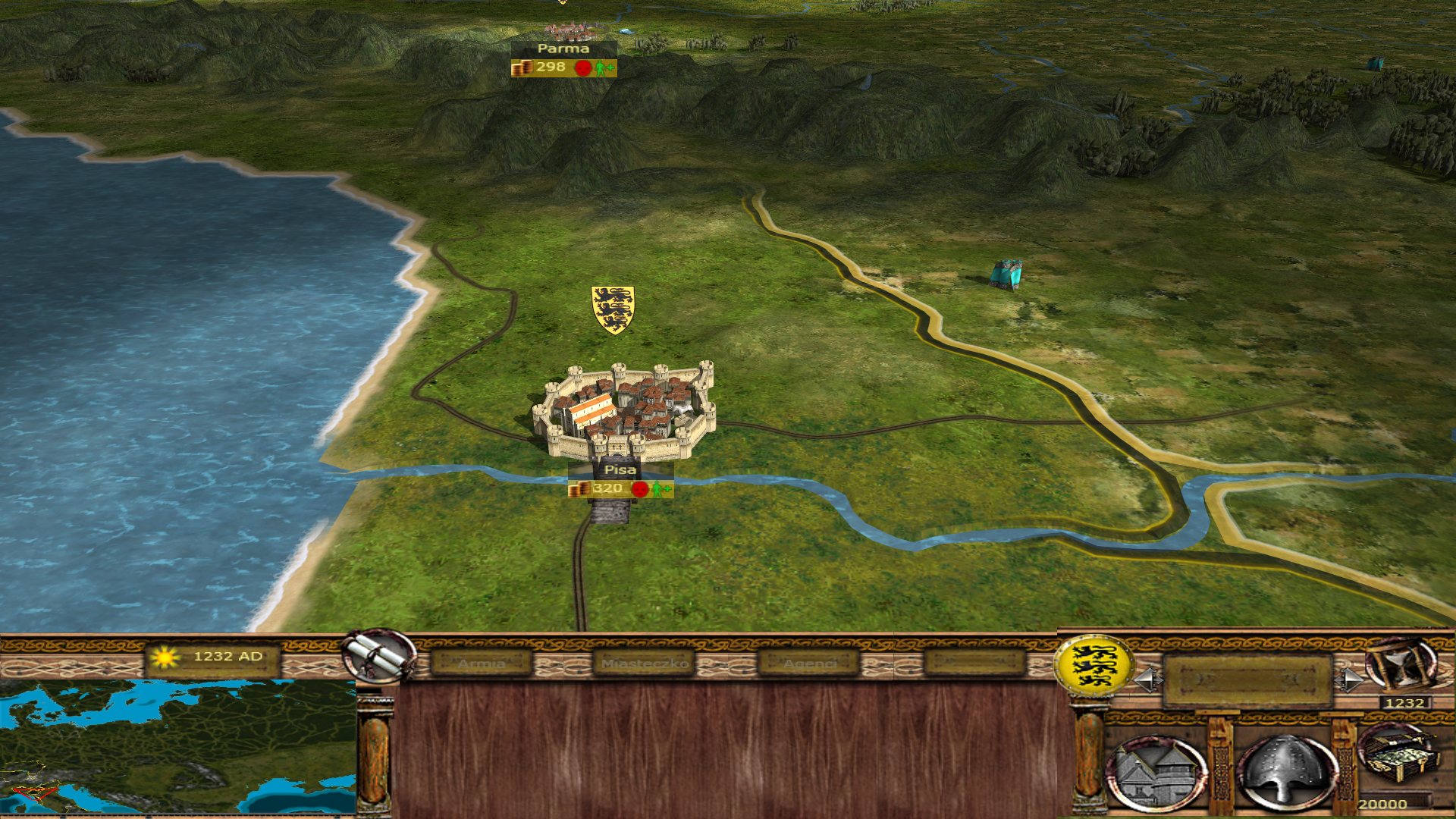

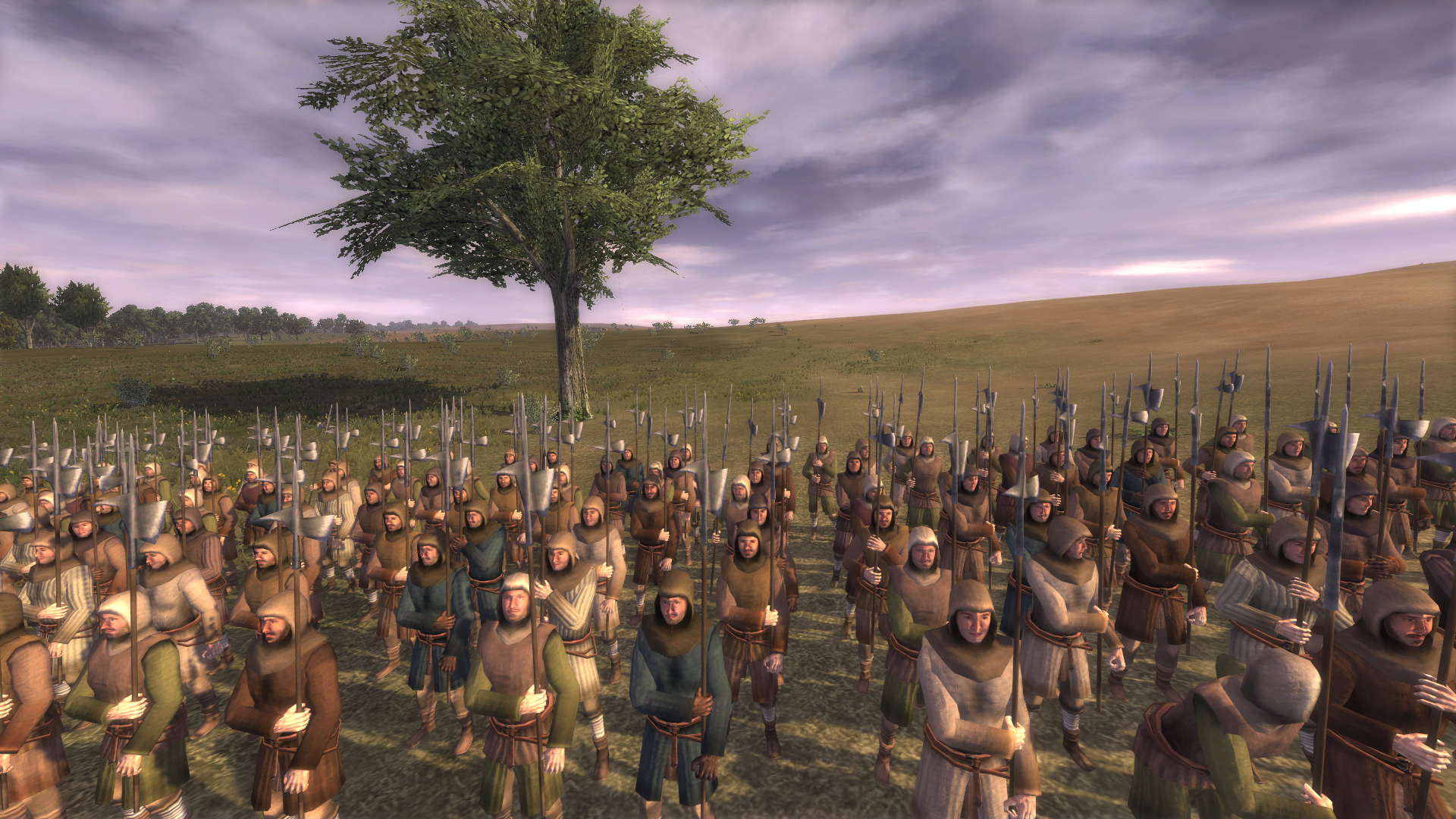

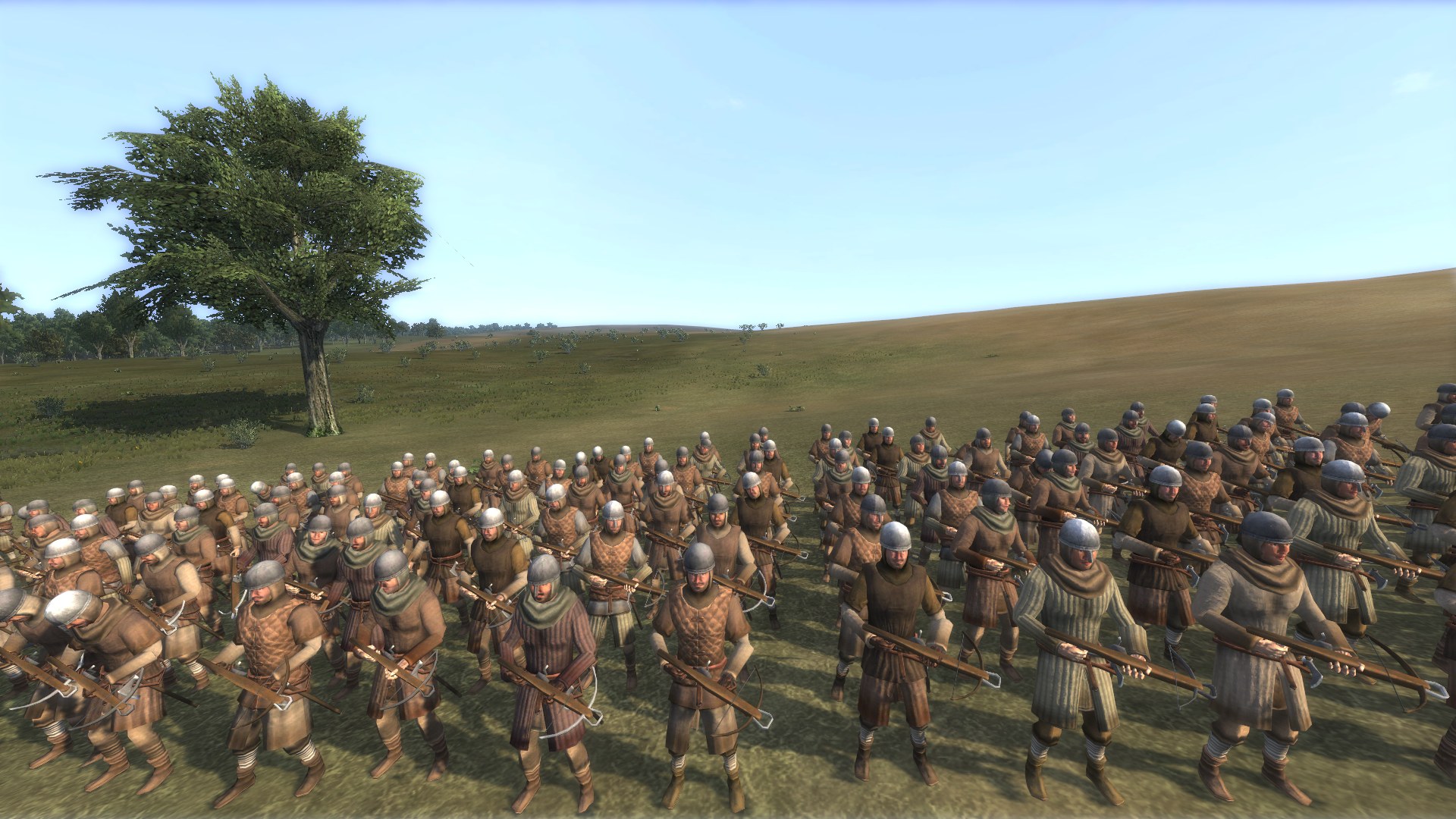
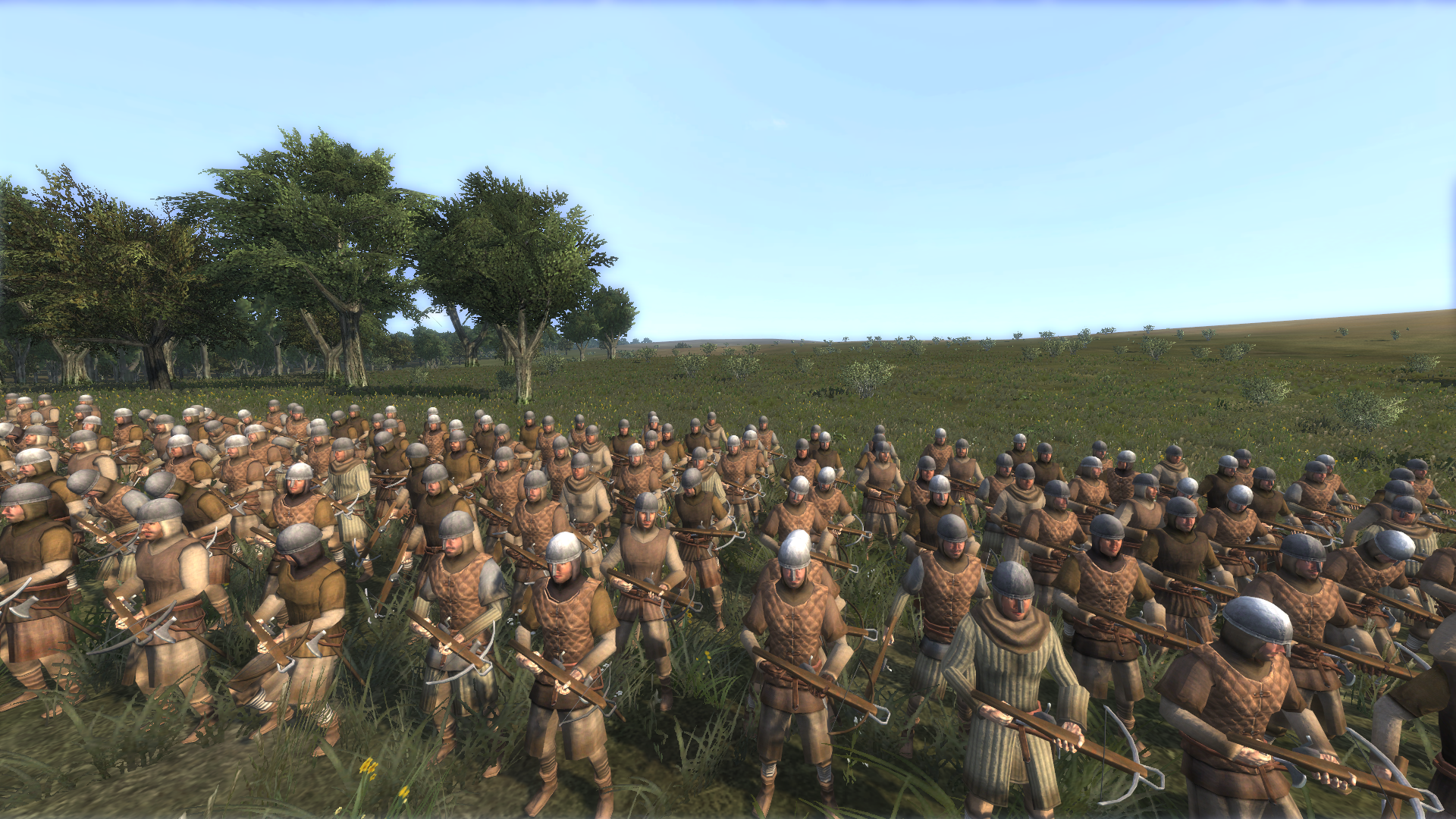
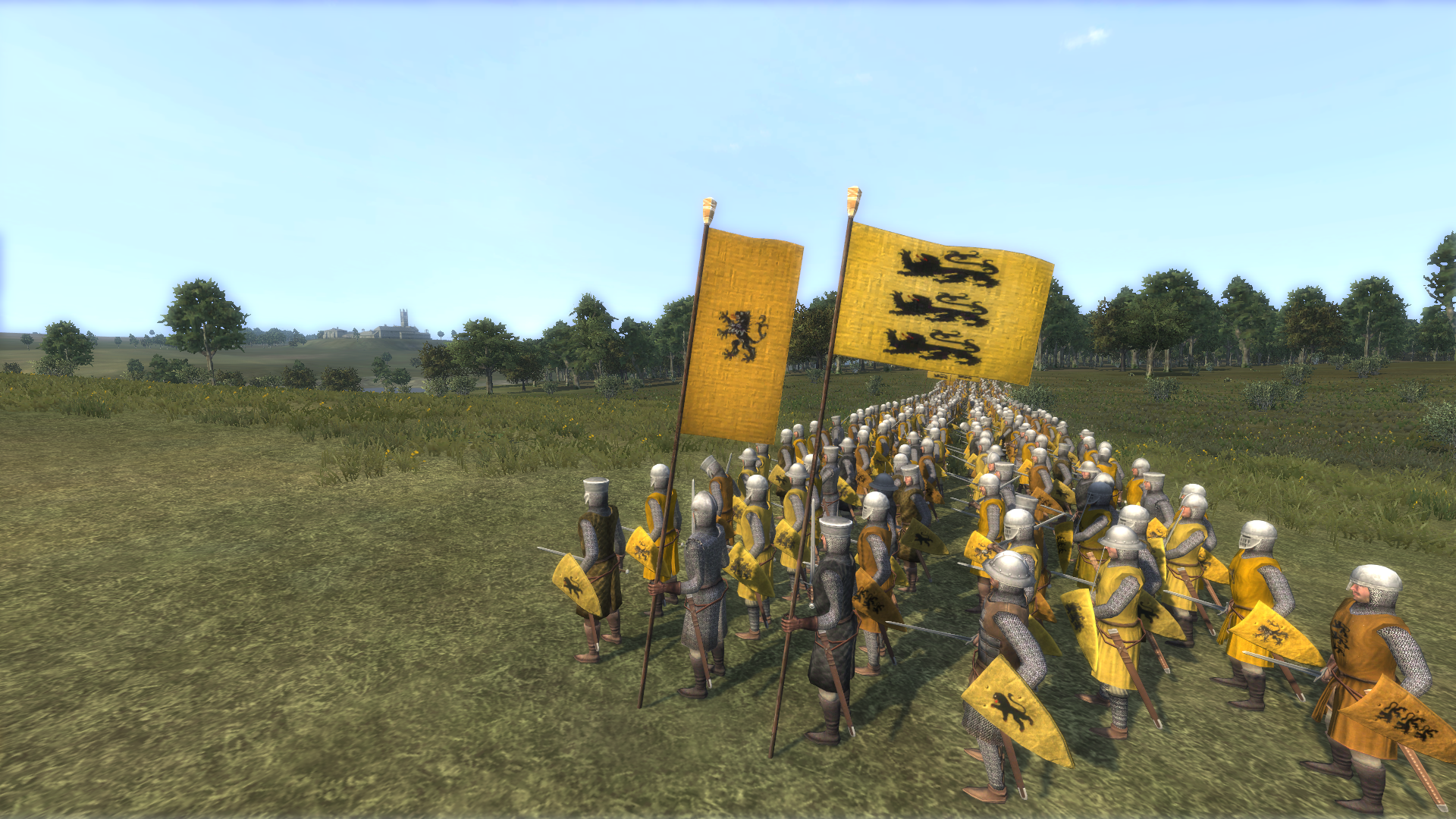
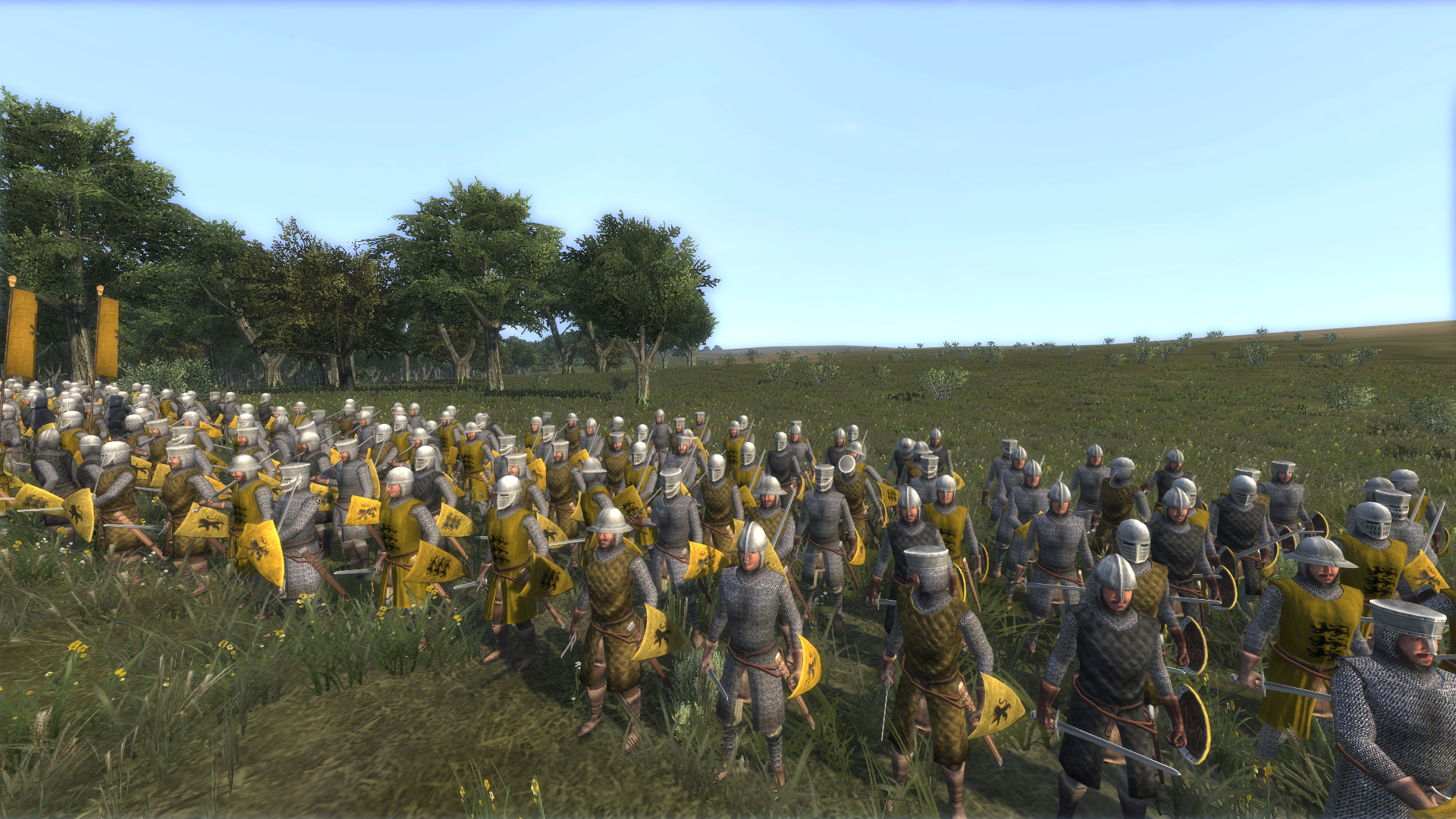
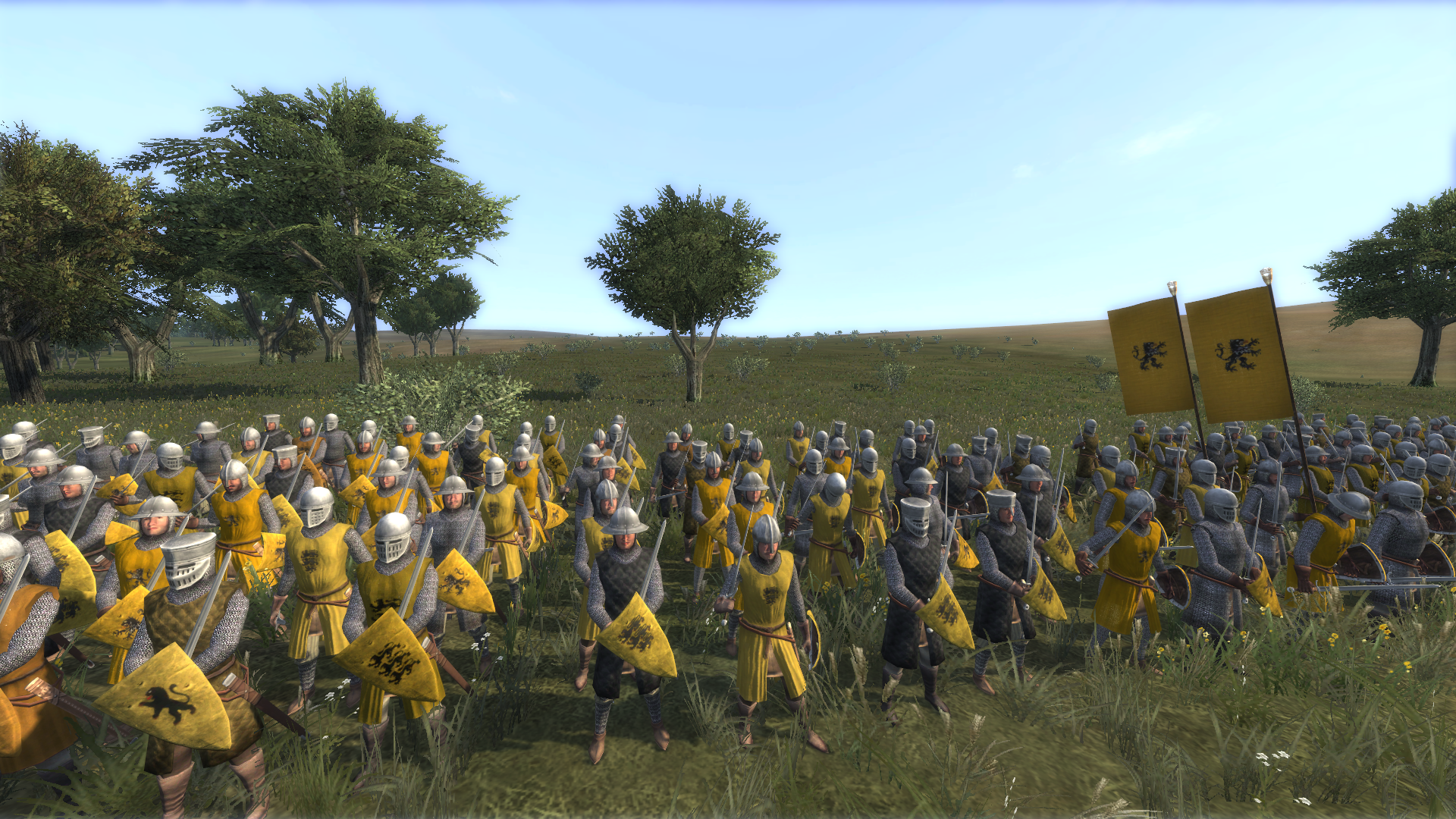
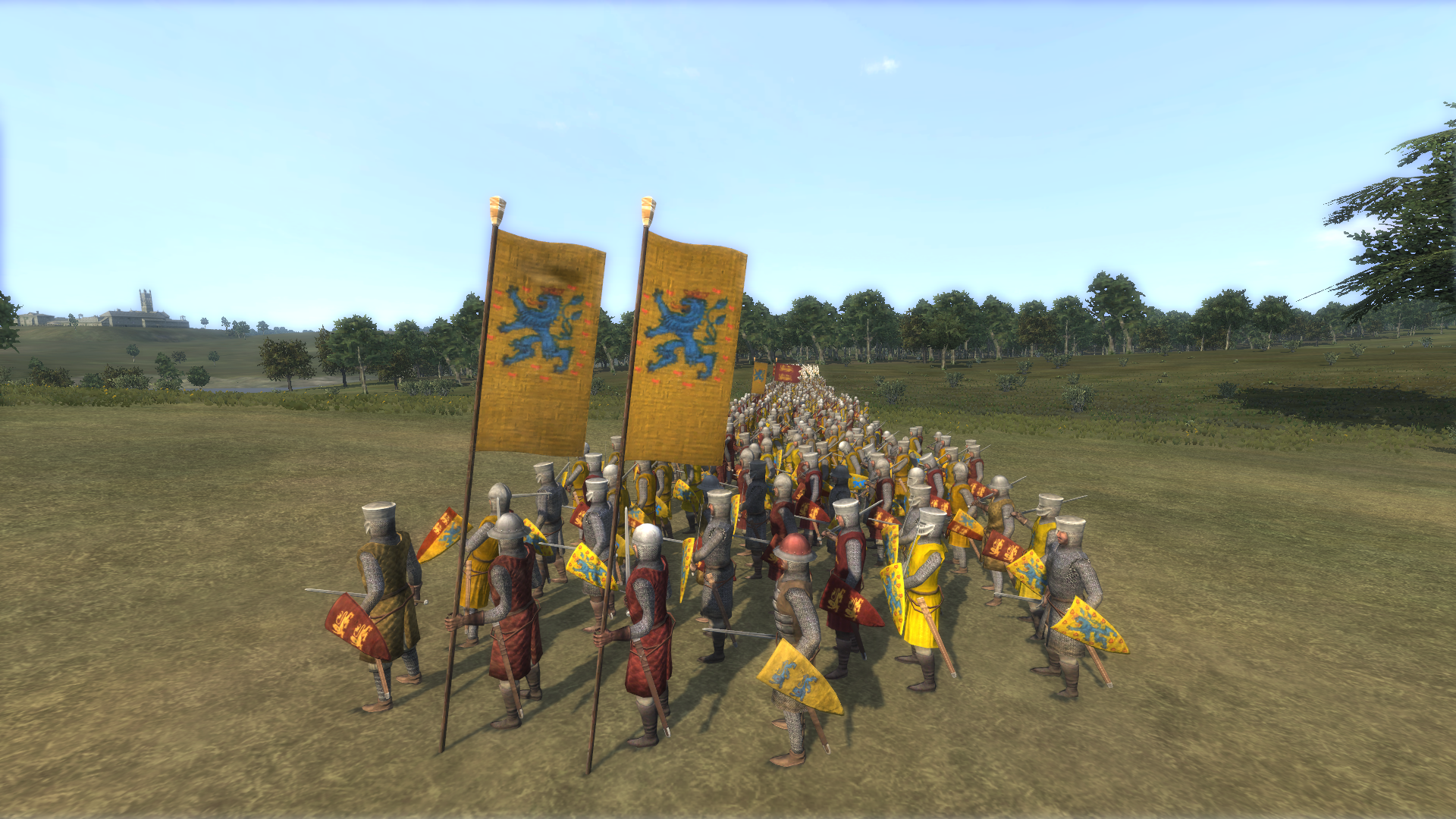
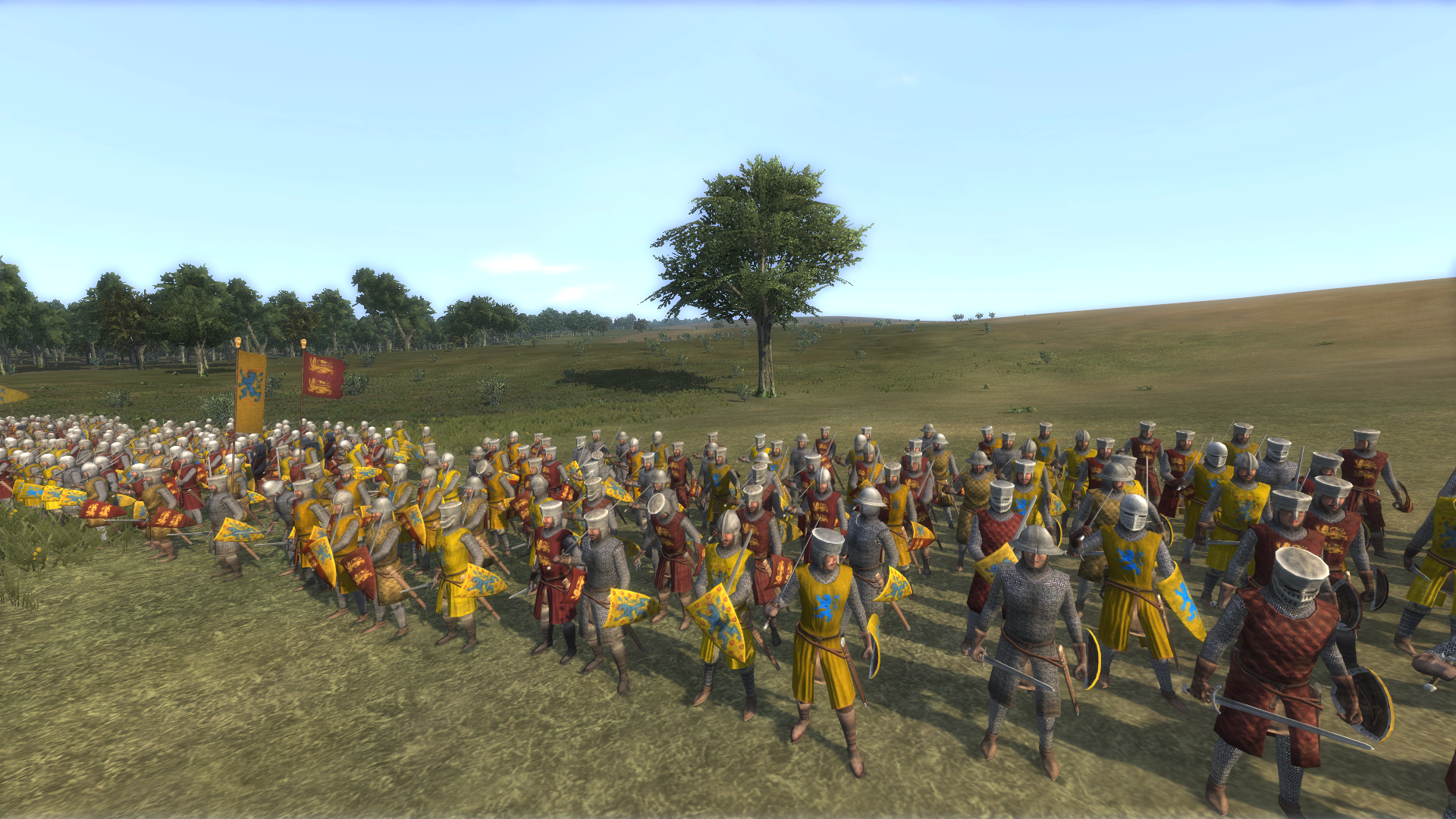
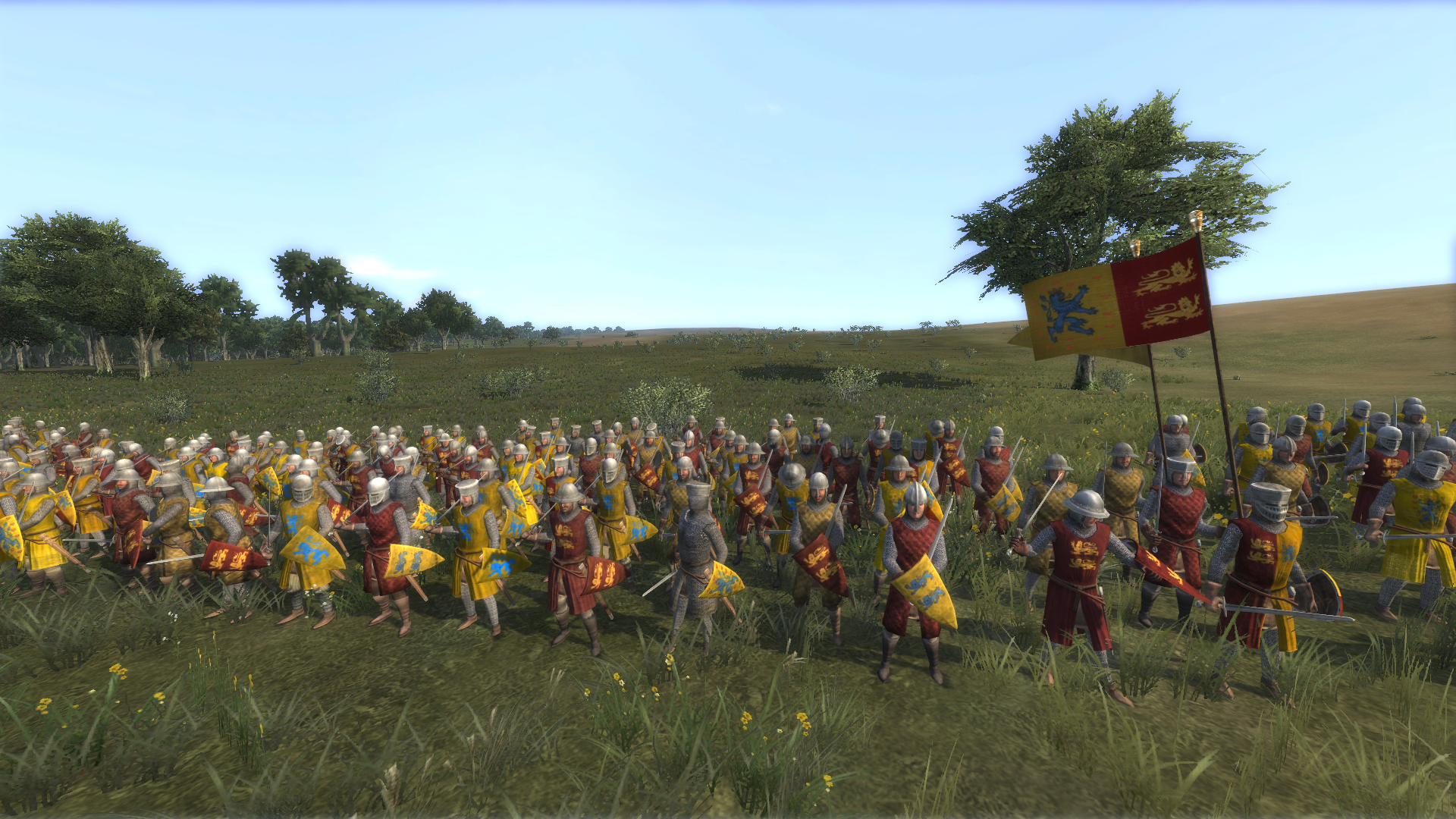
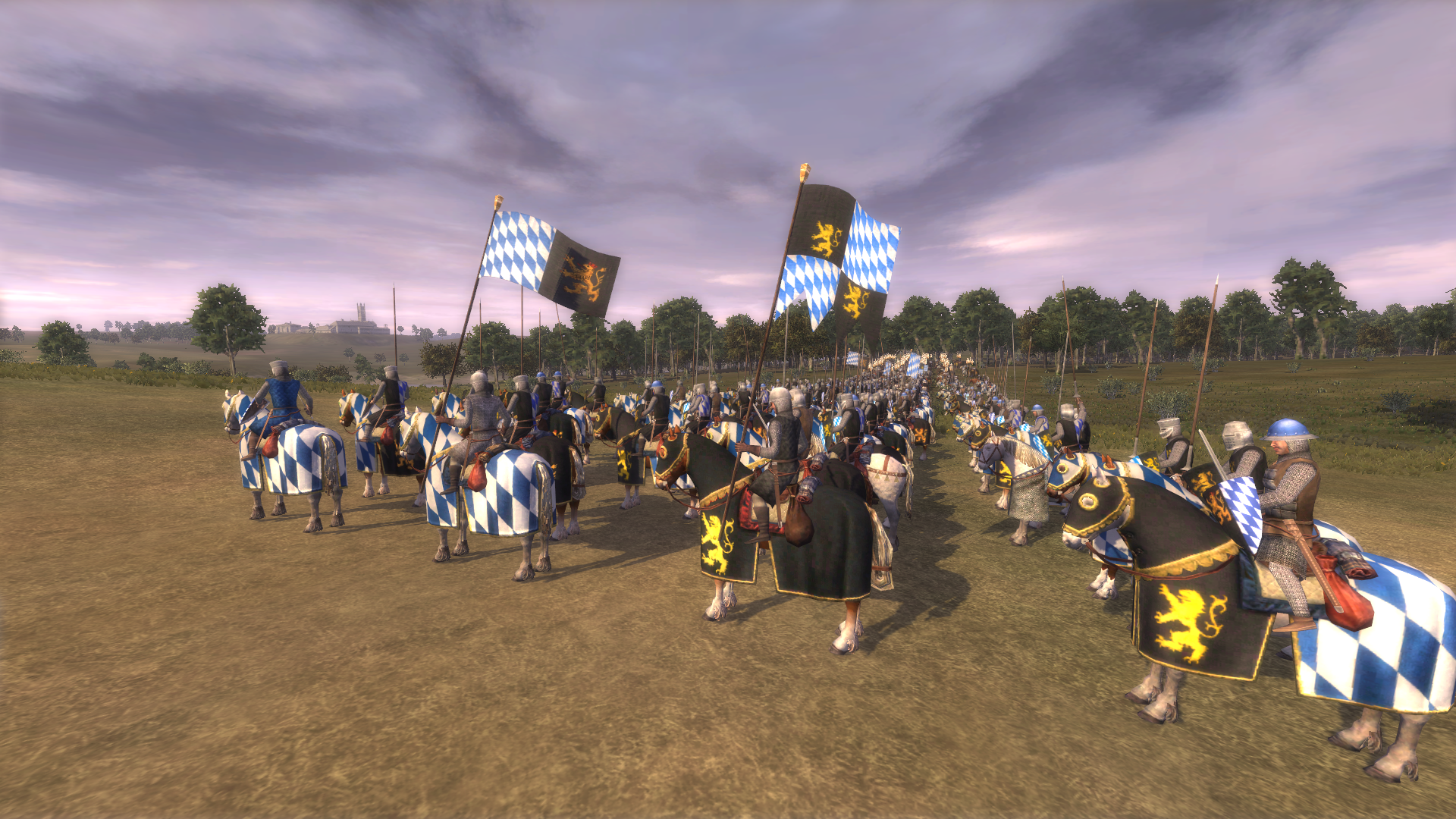
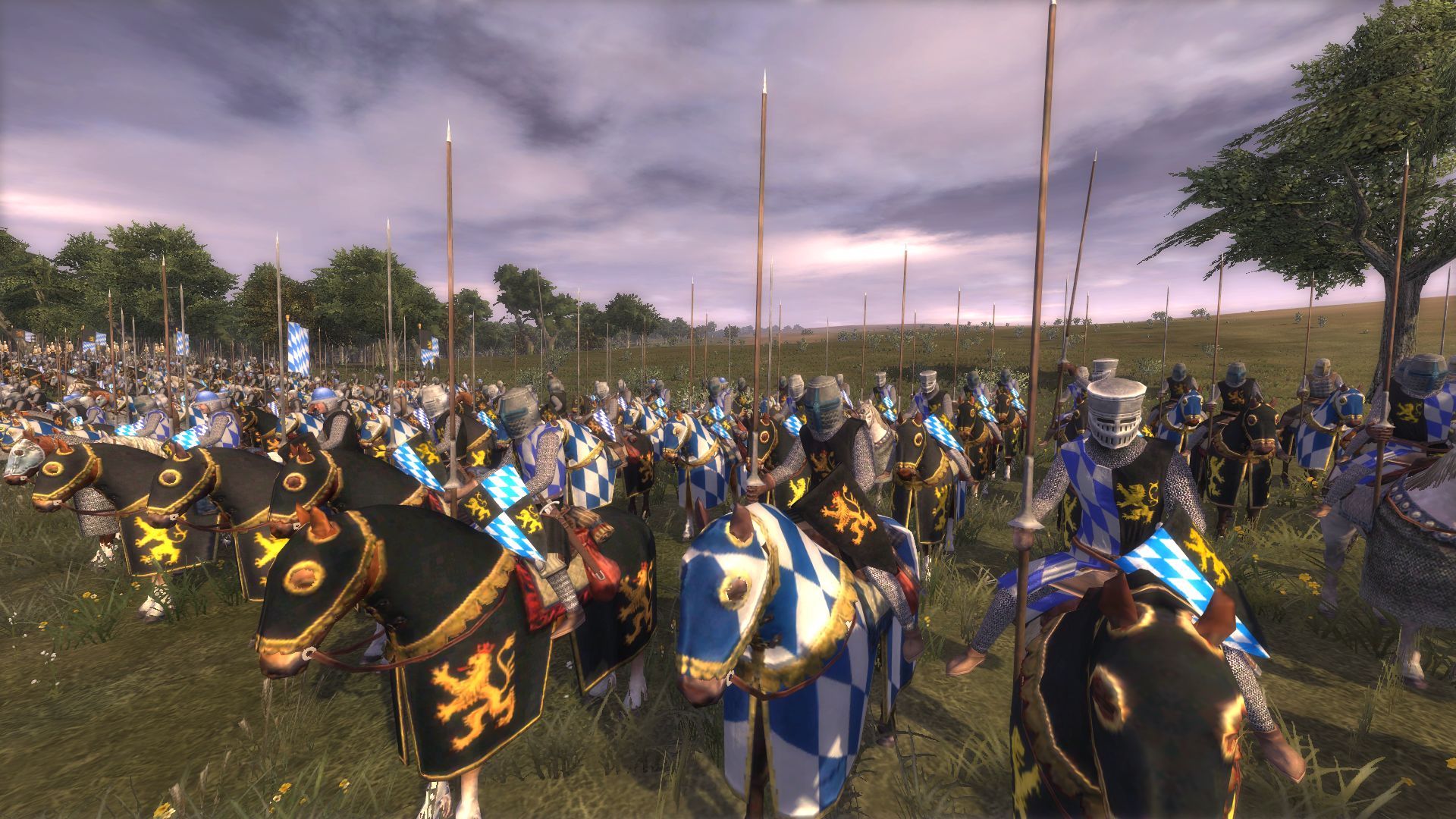
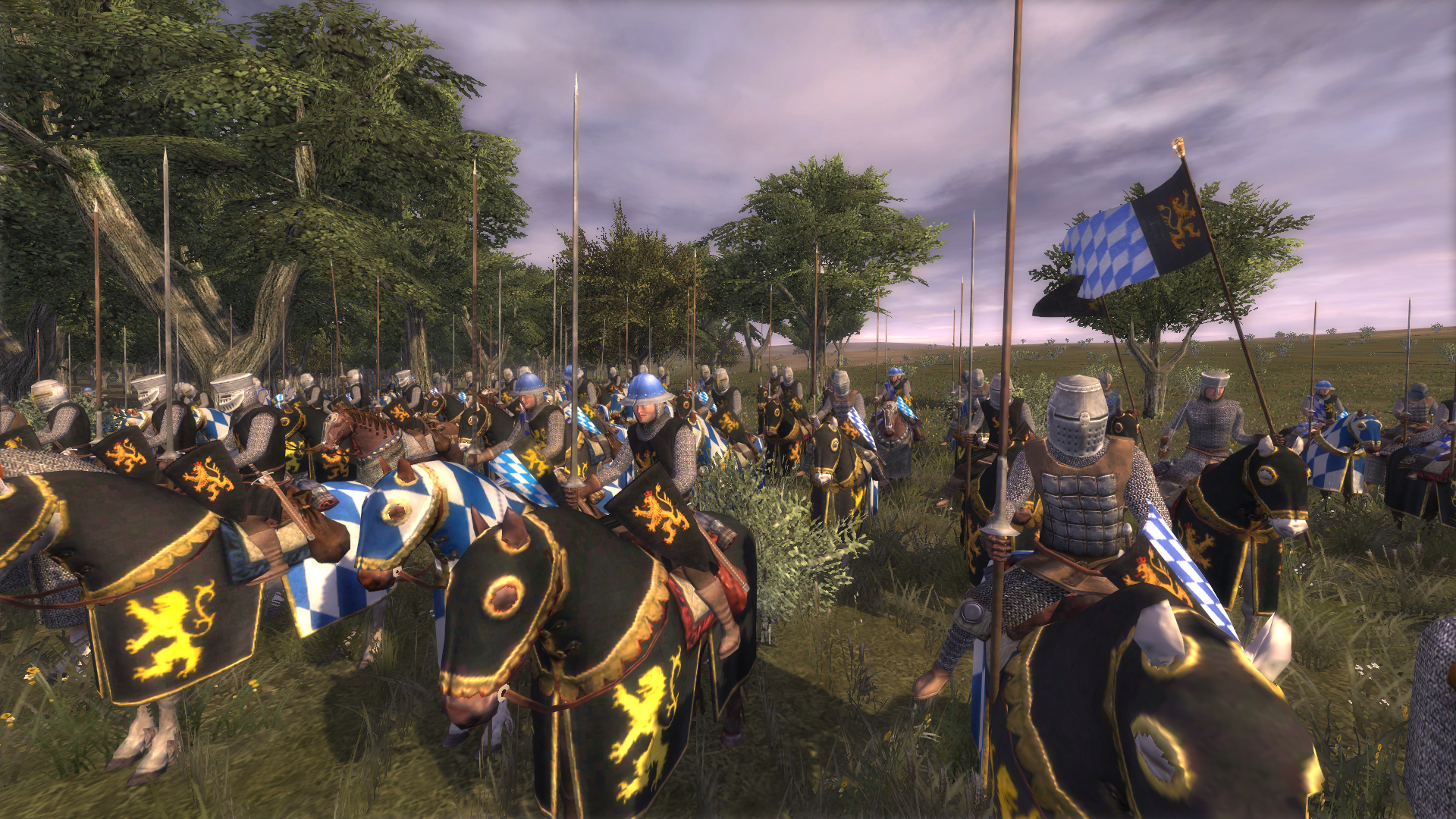
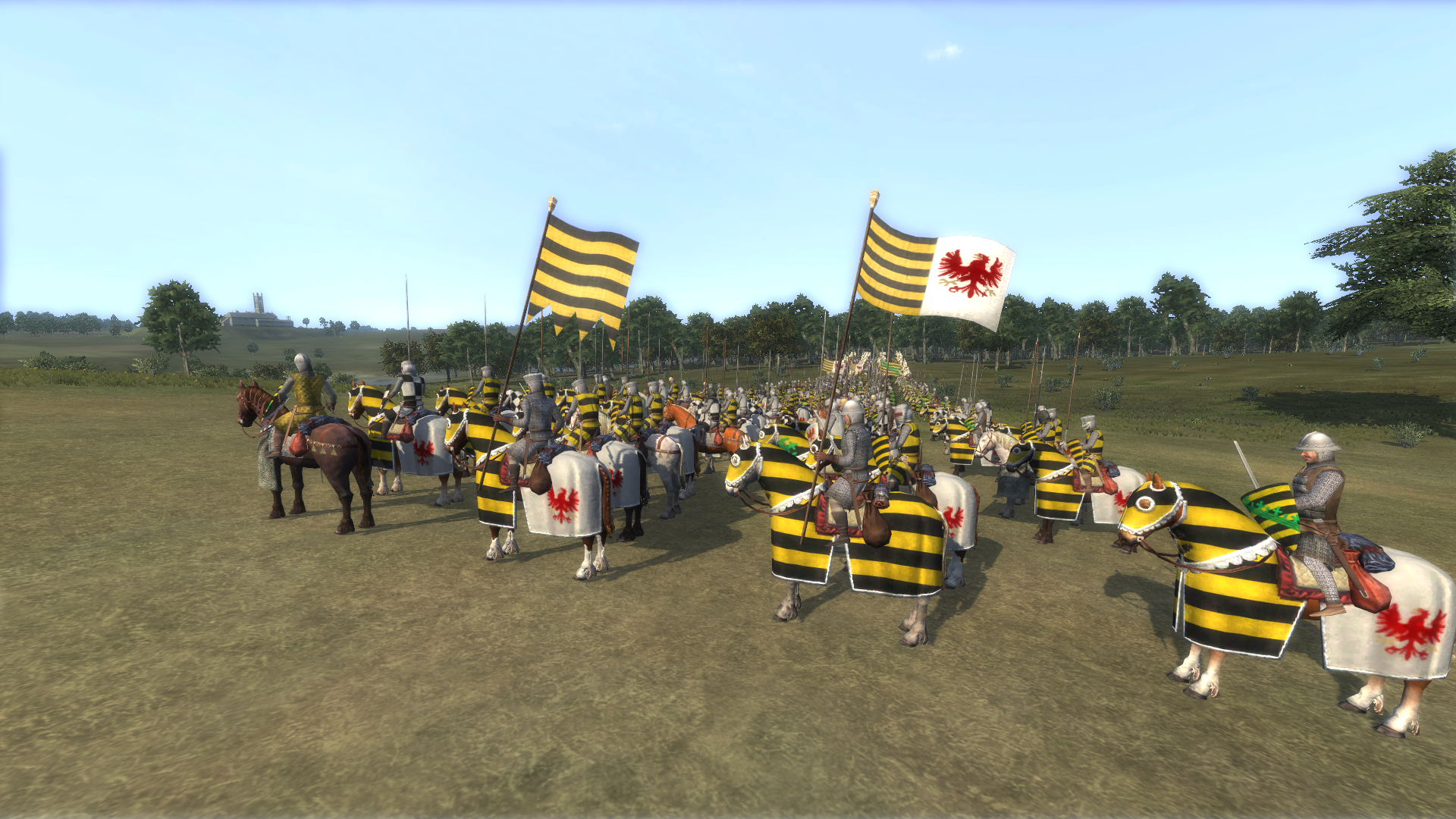

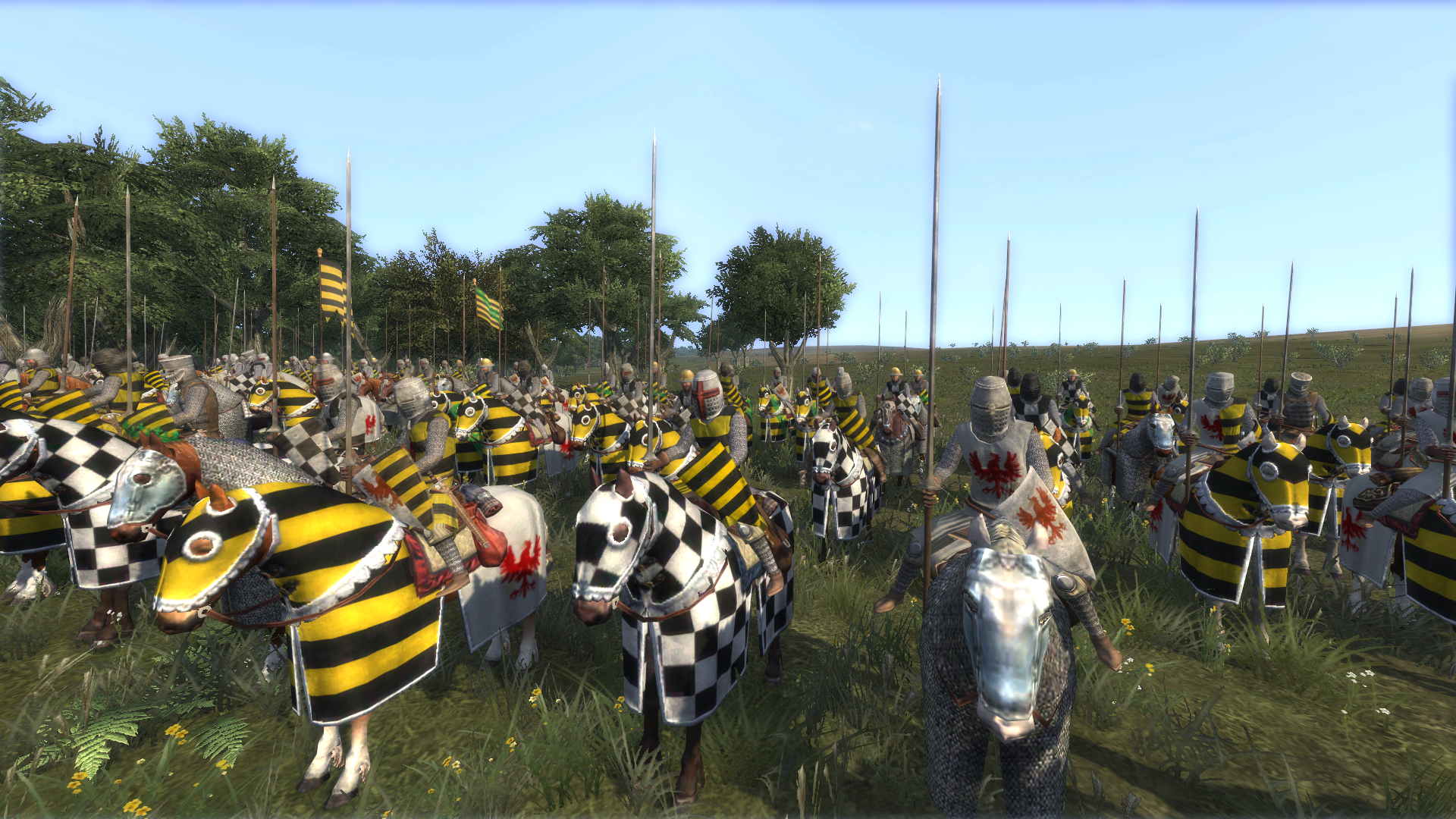


Diversity is always appriciated :)
Are the settlement strat models 'home made'? Good ones, at any rate, fits well in.